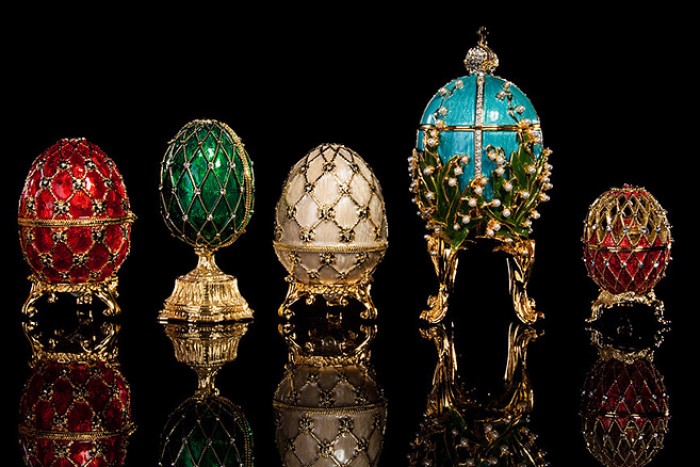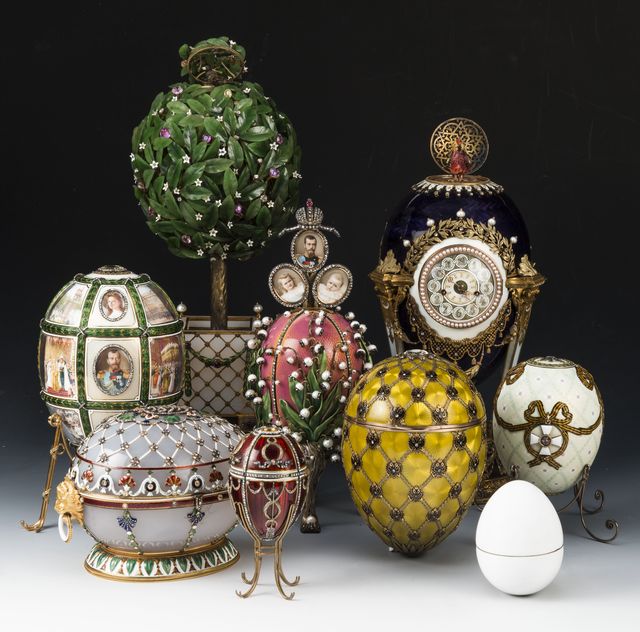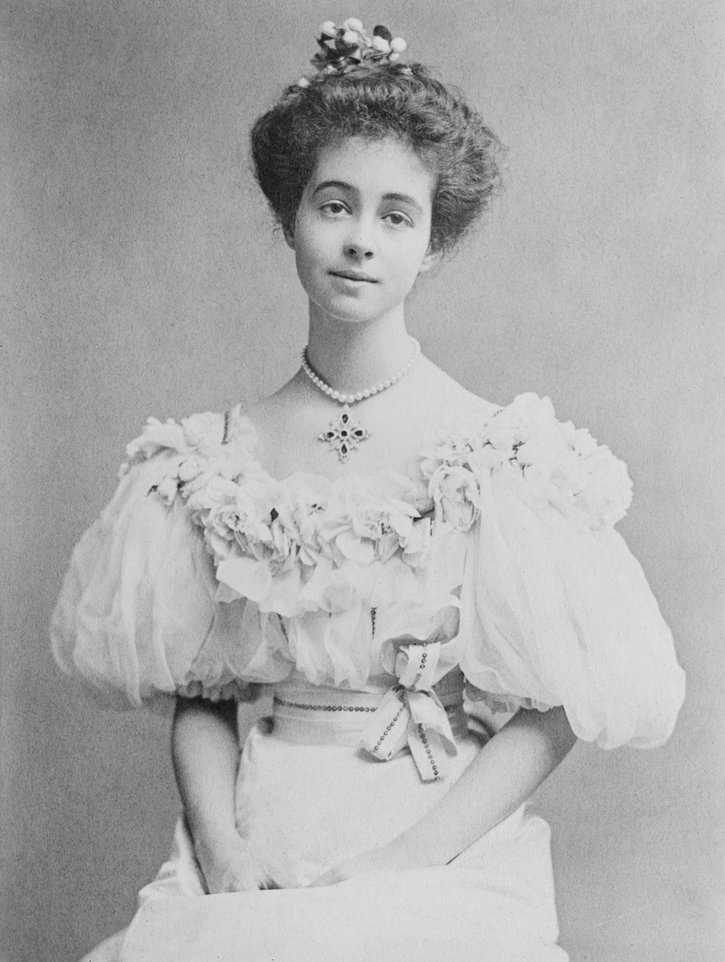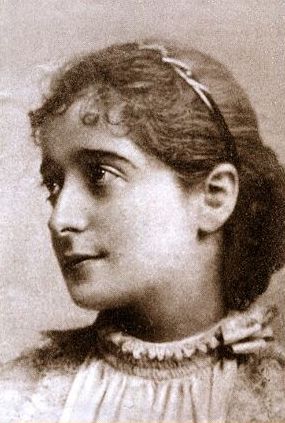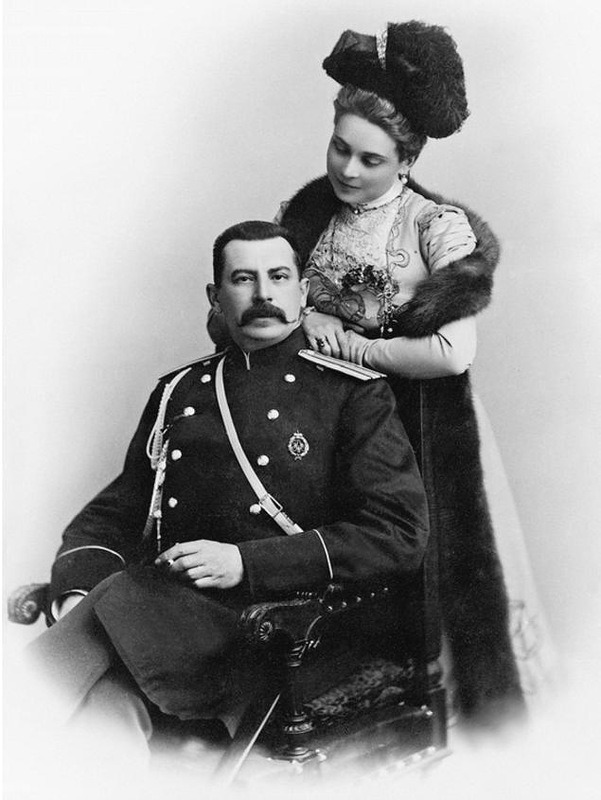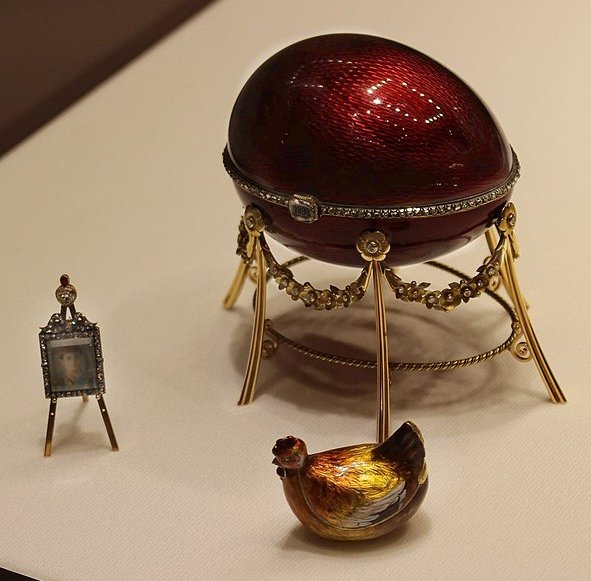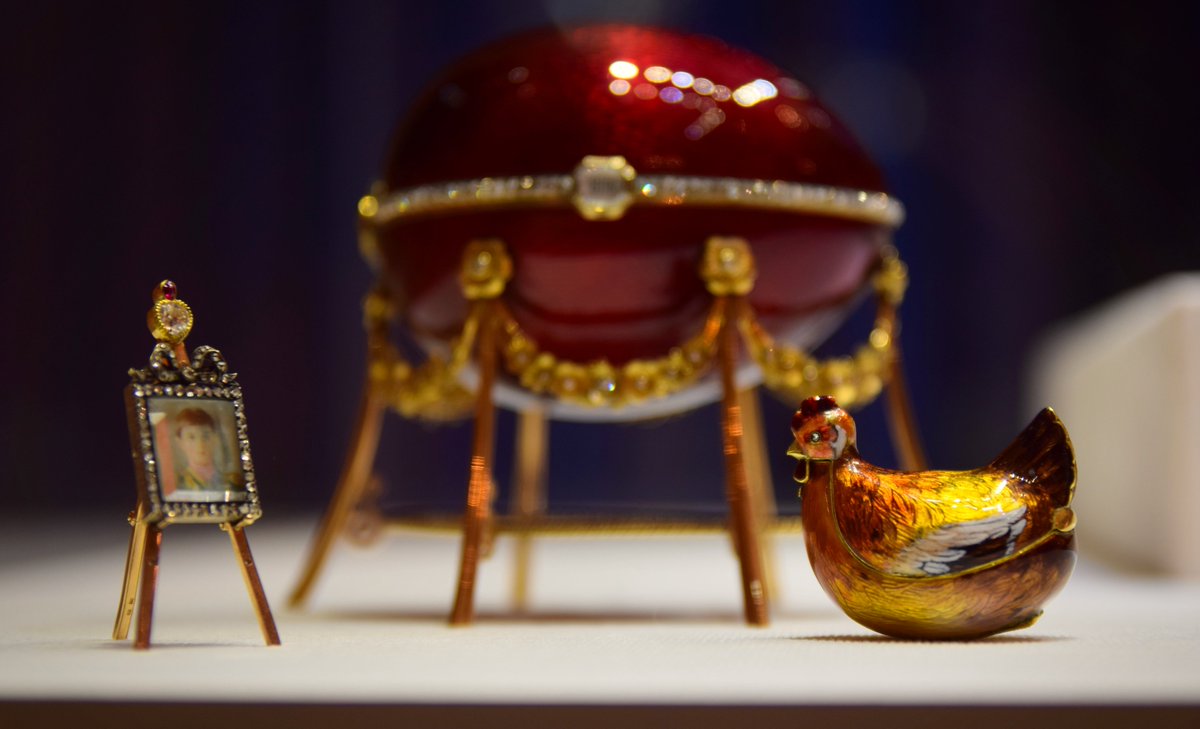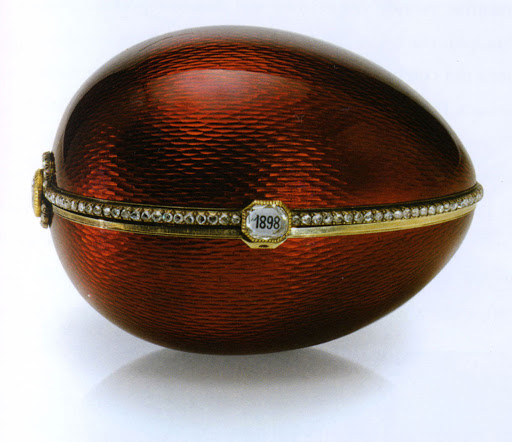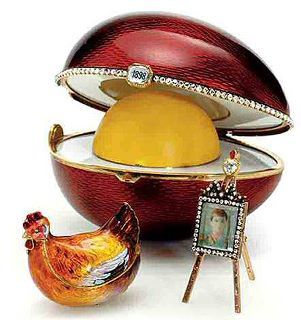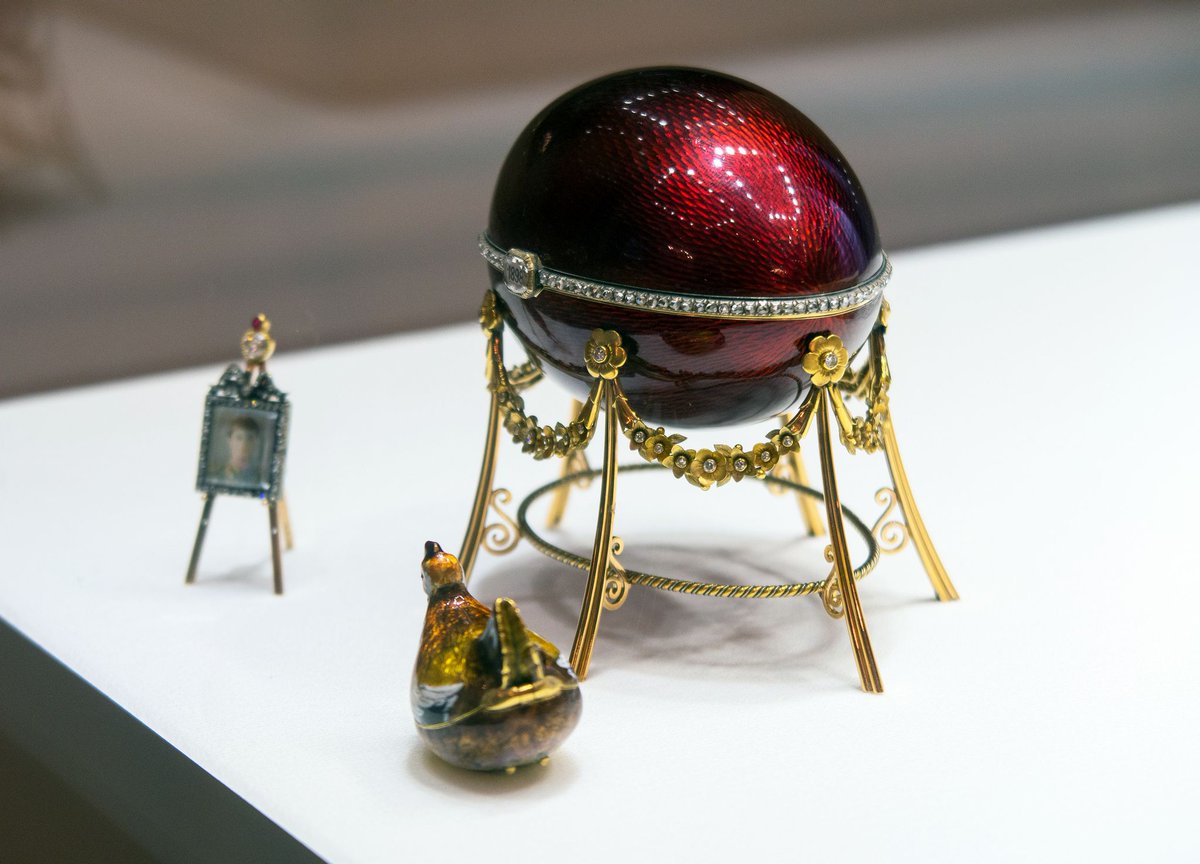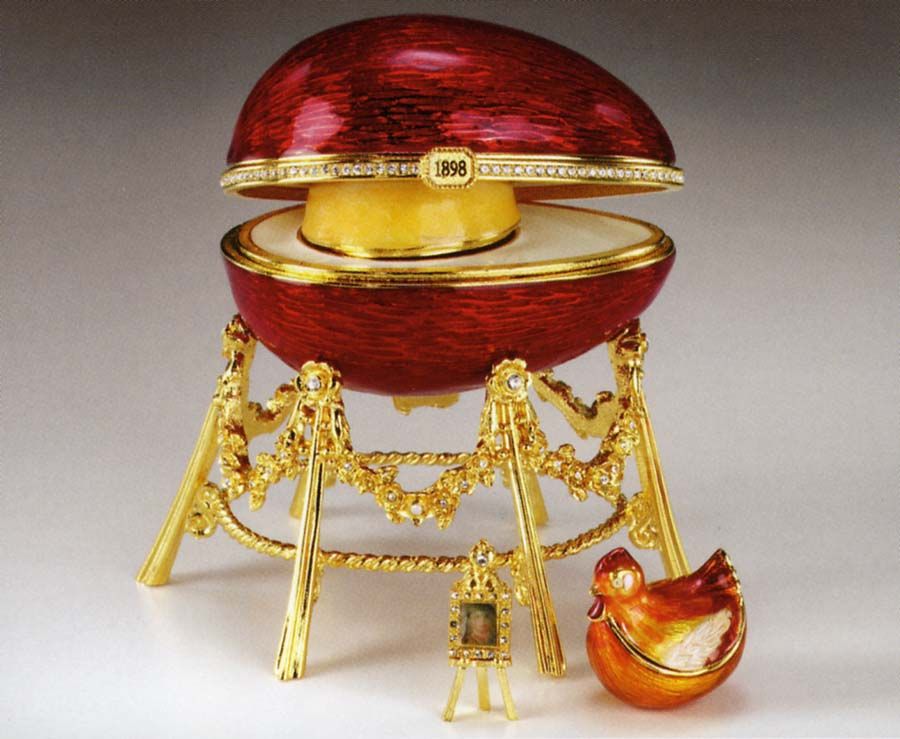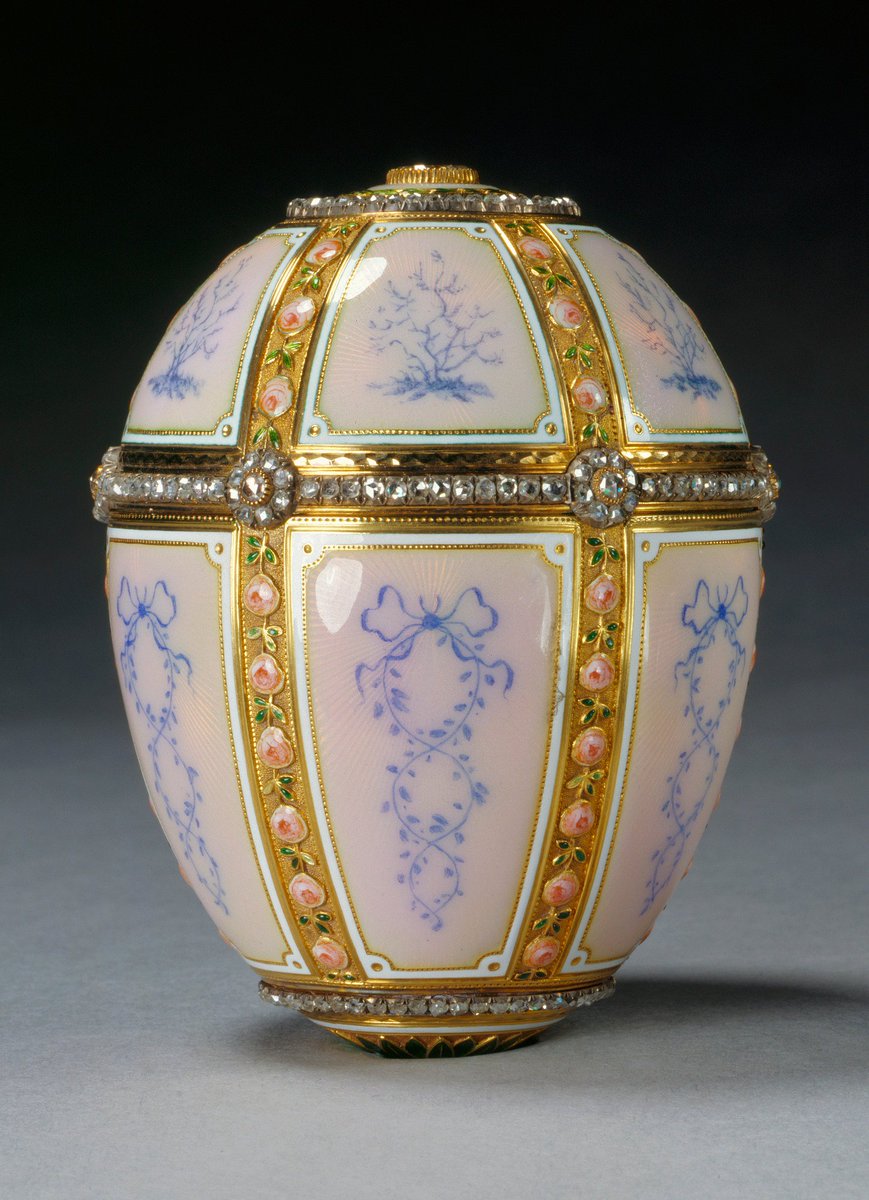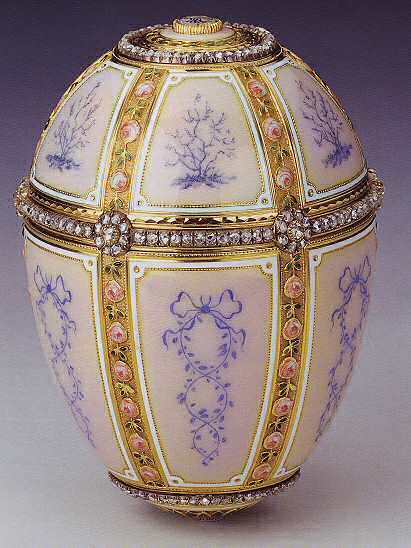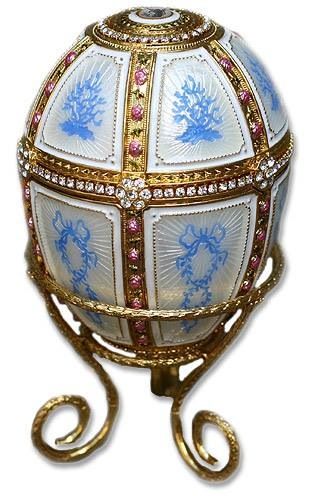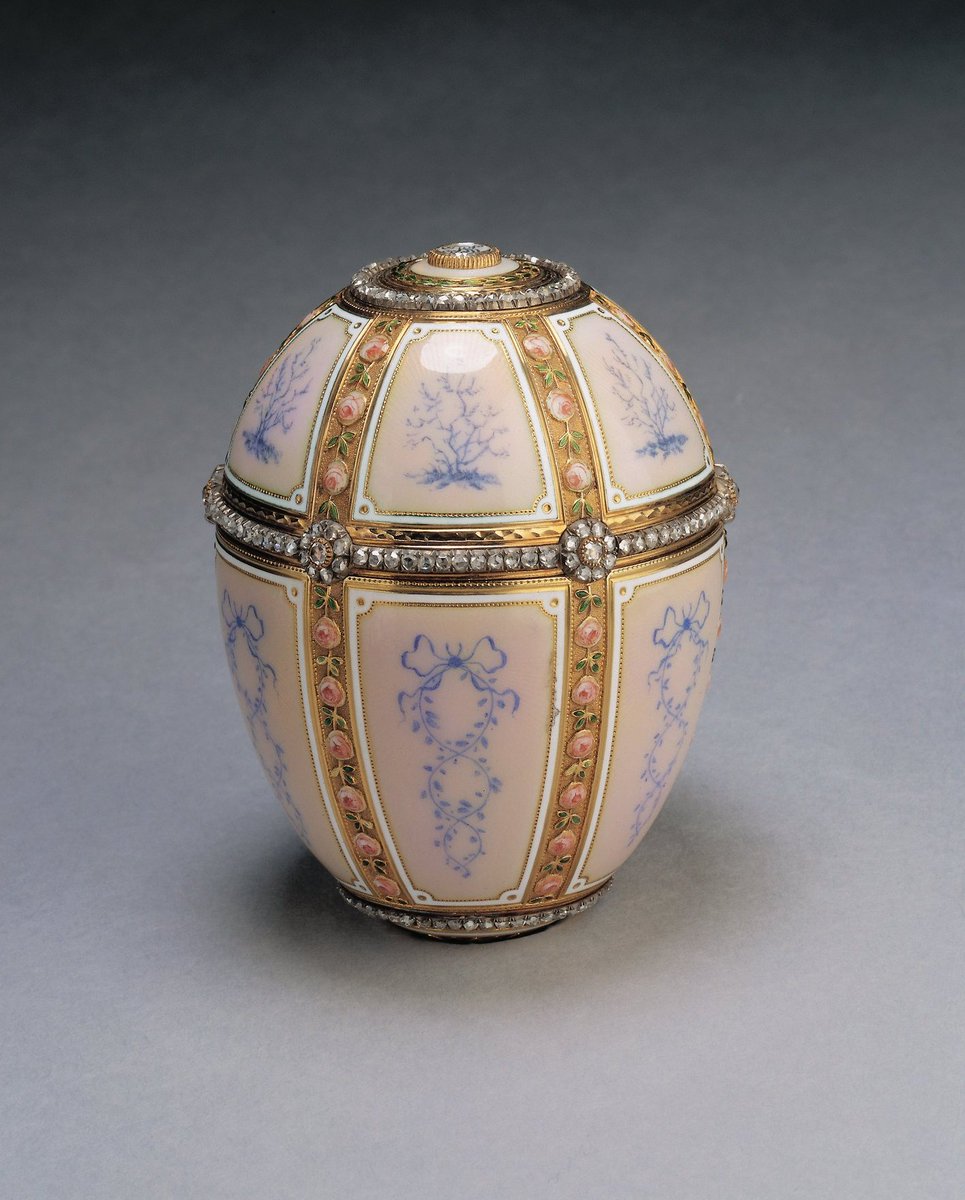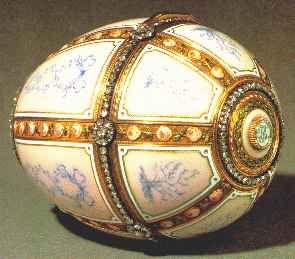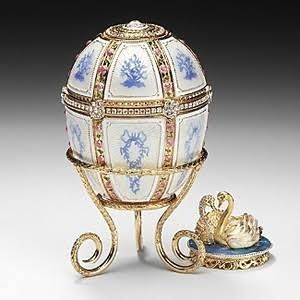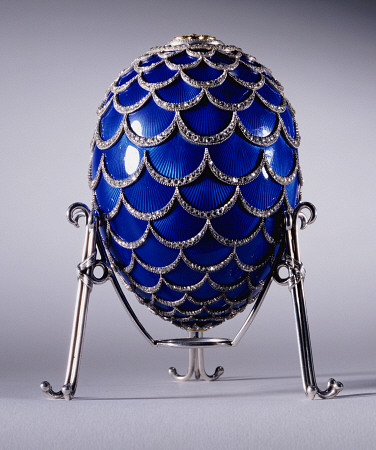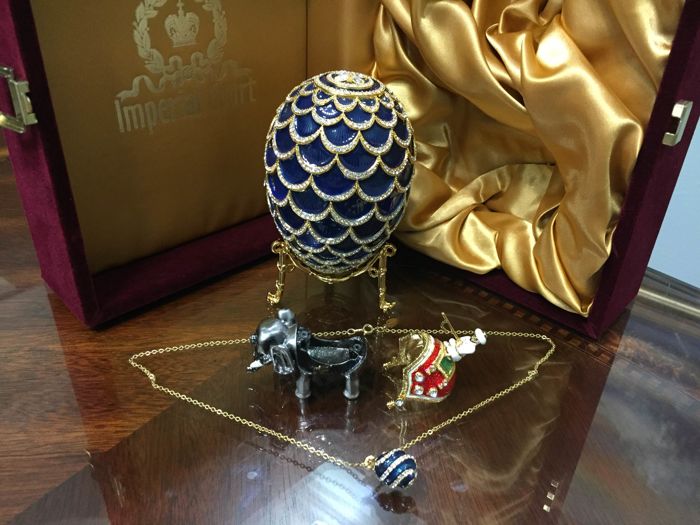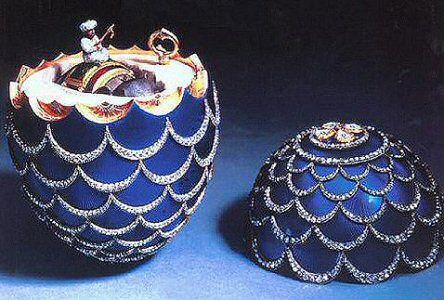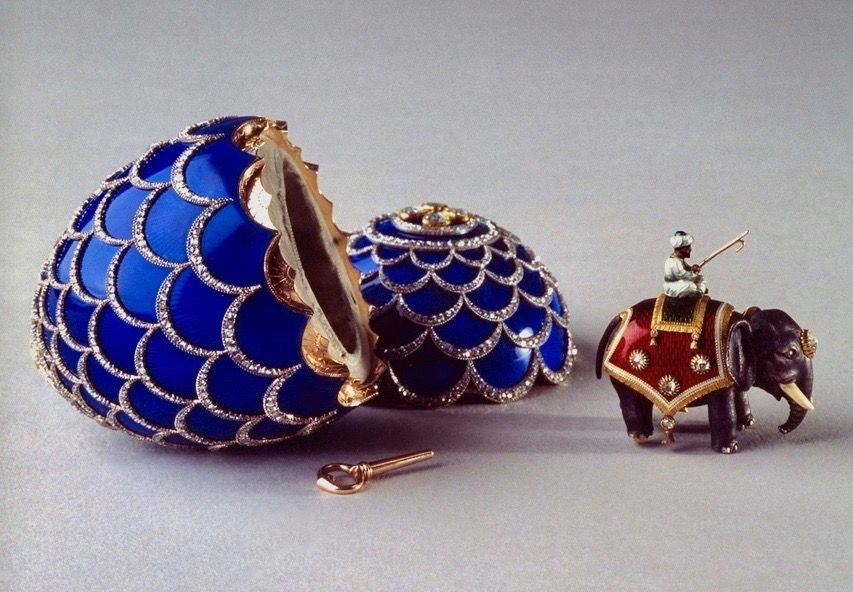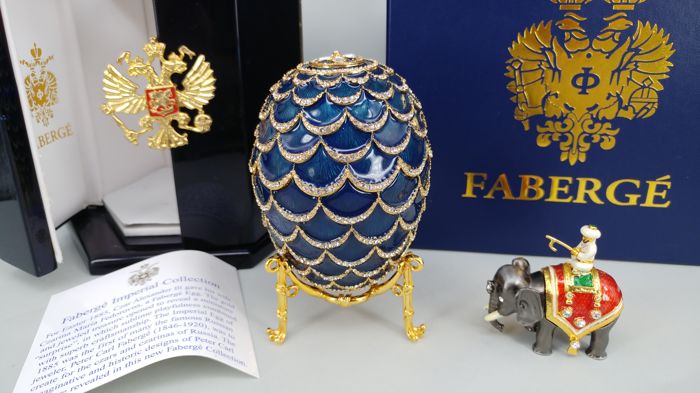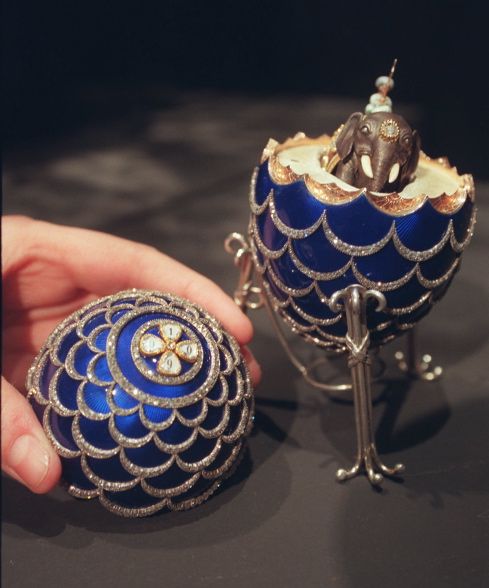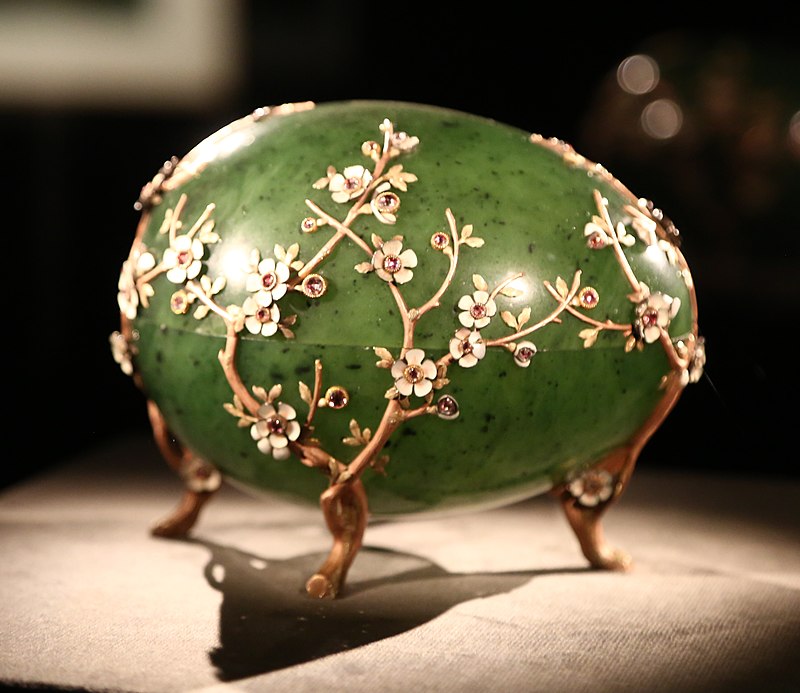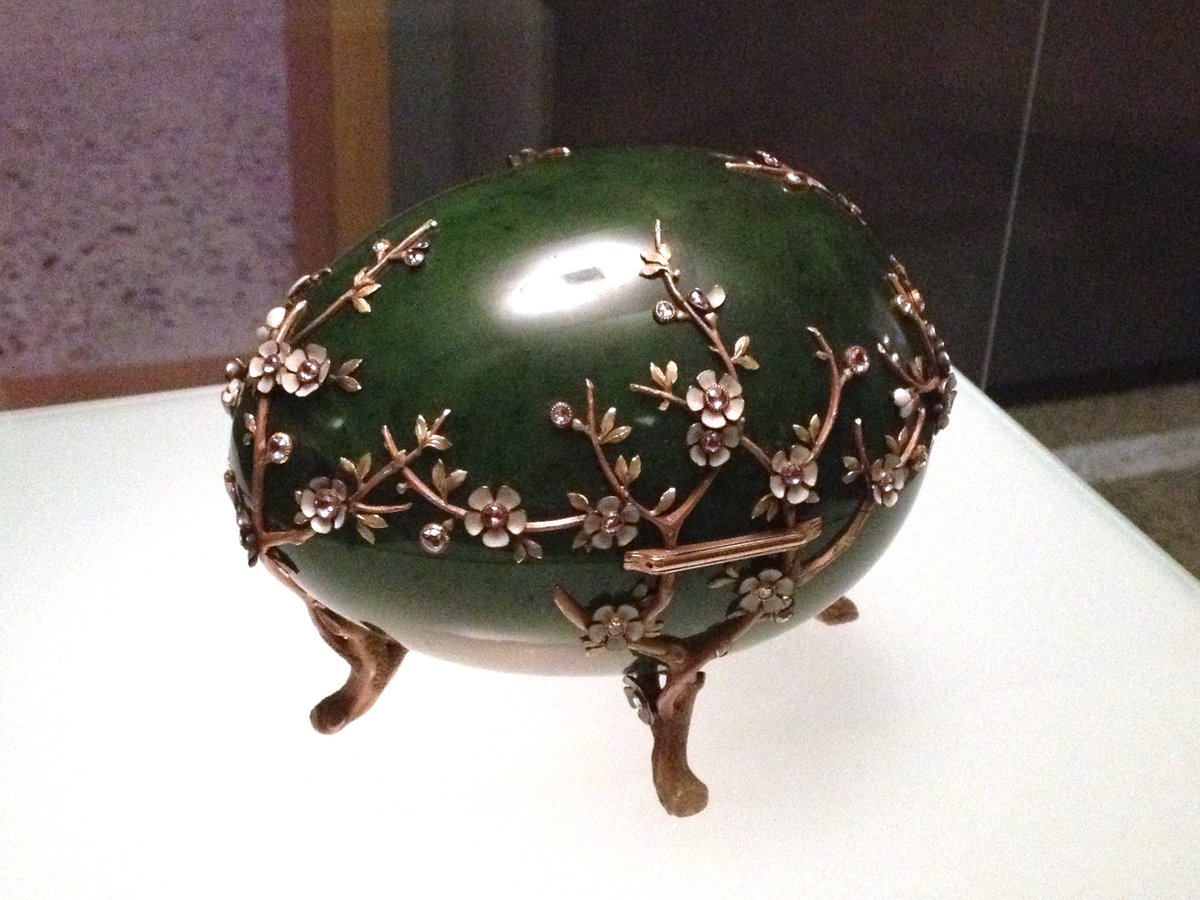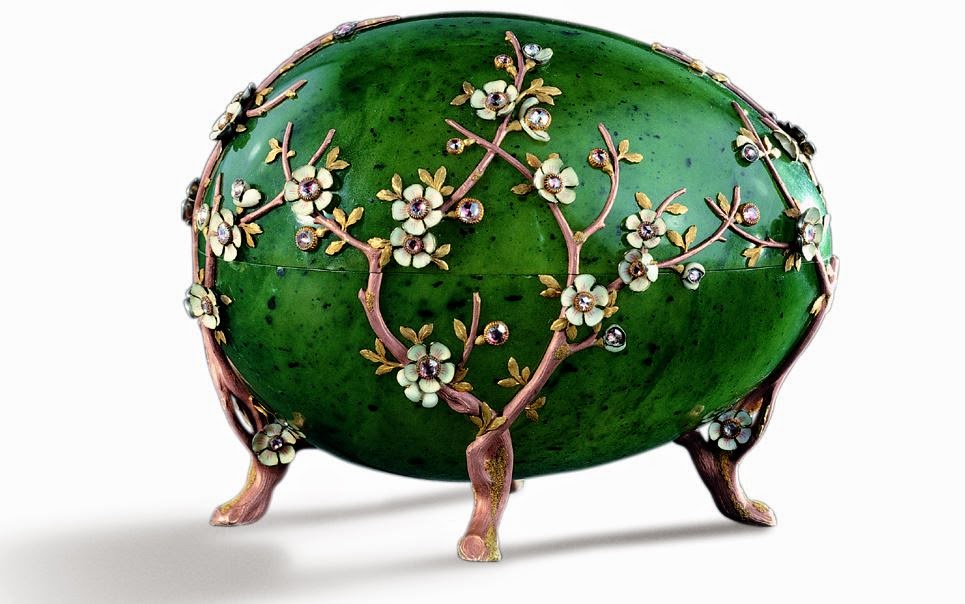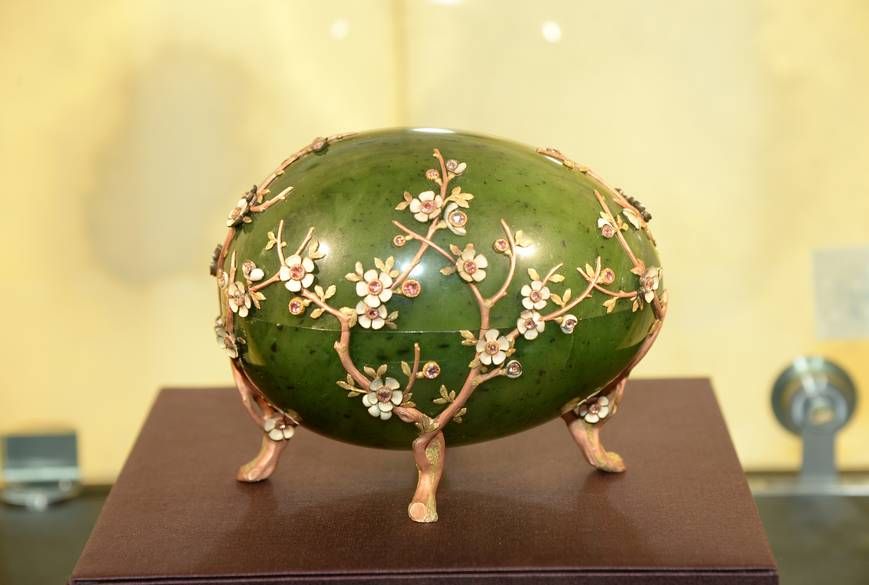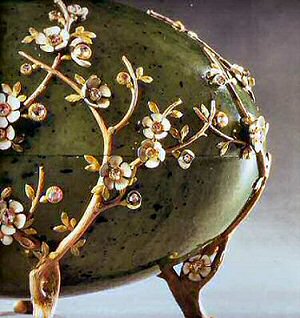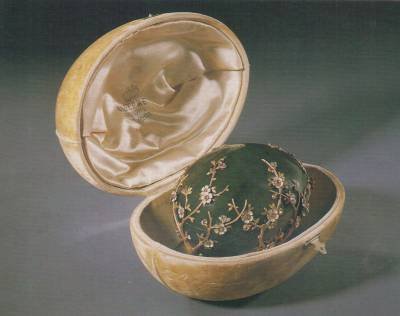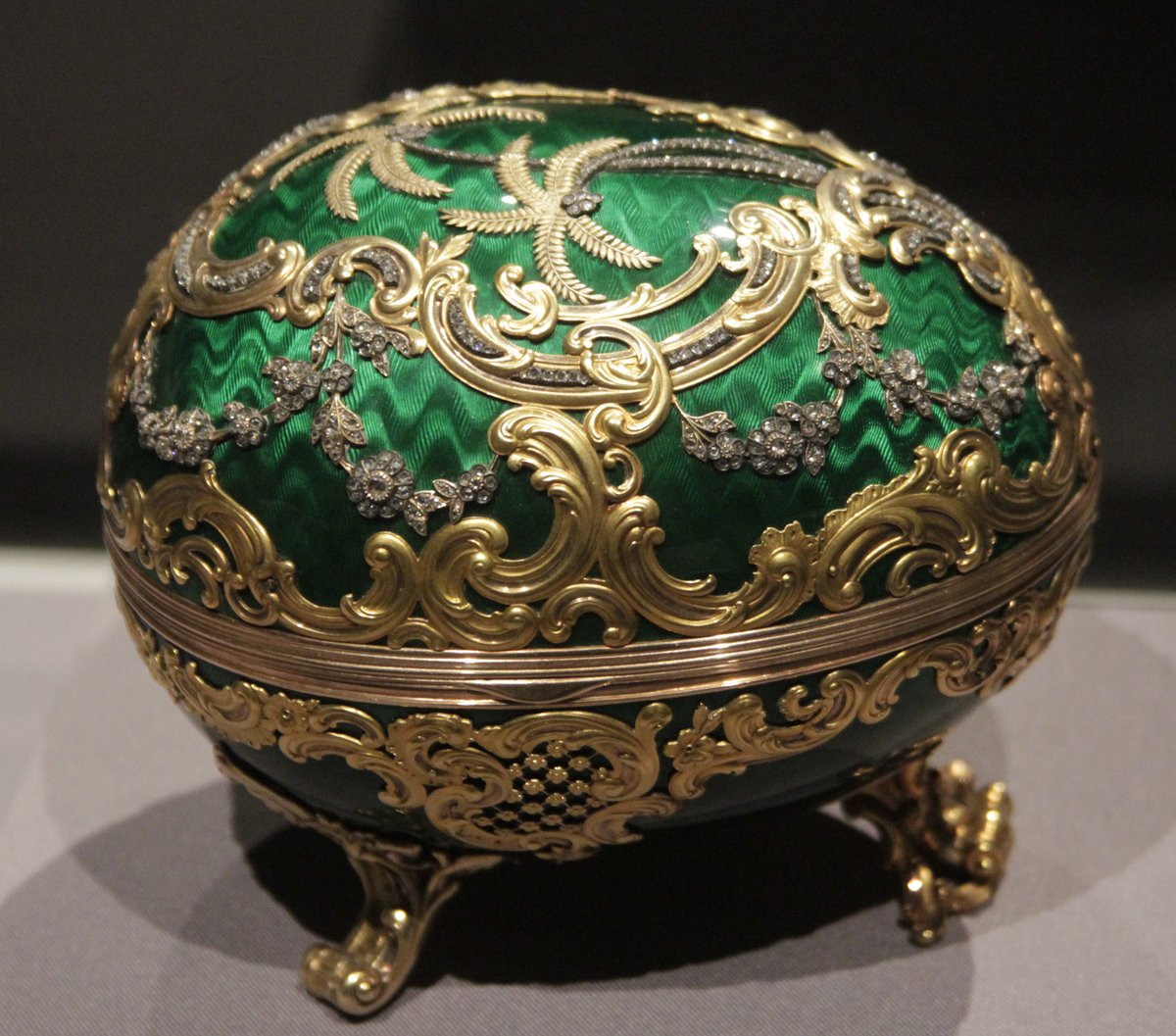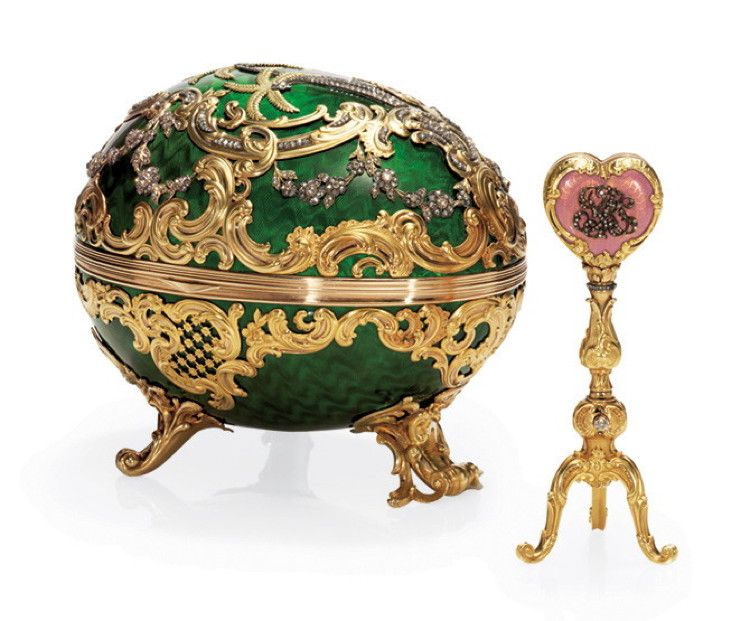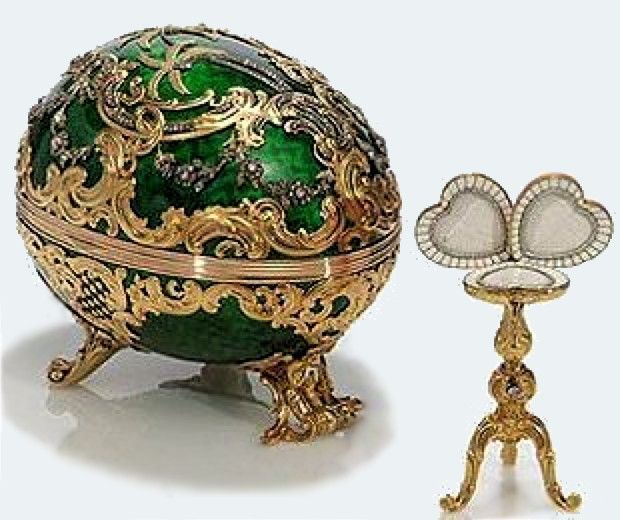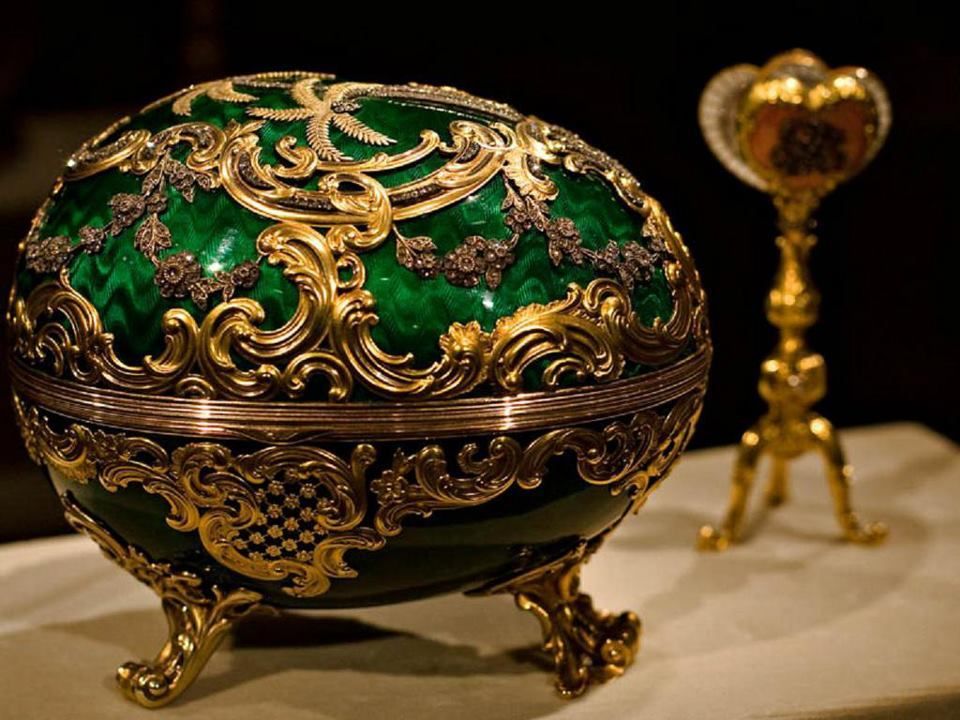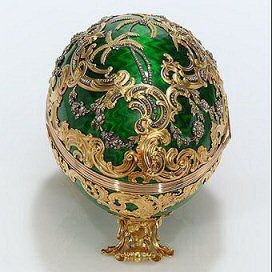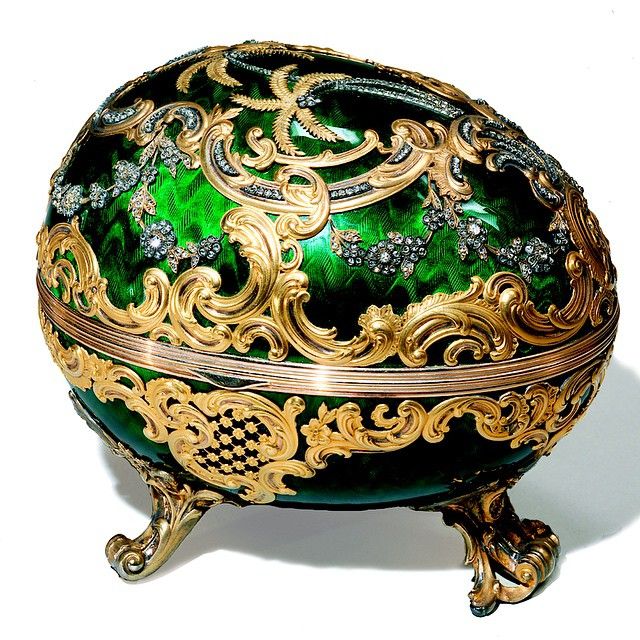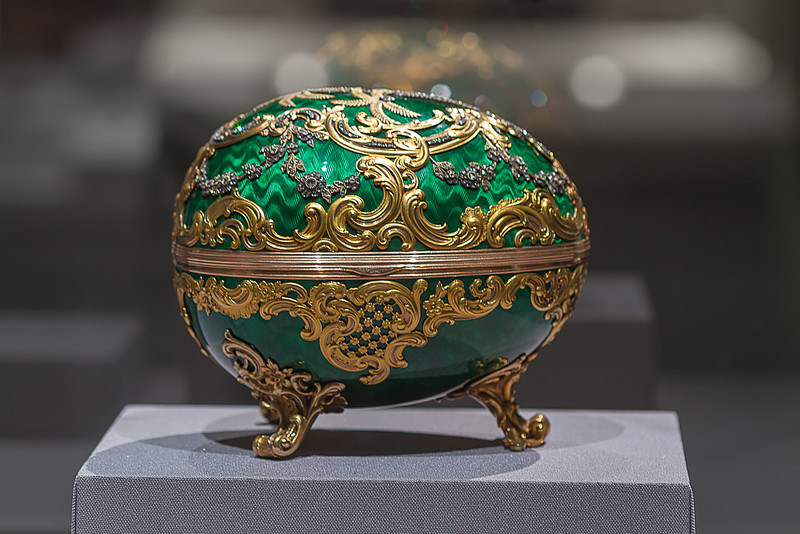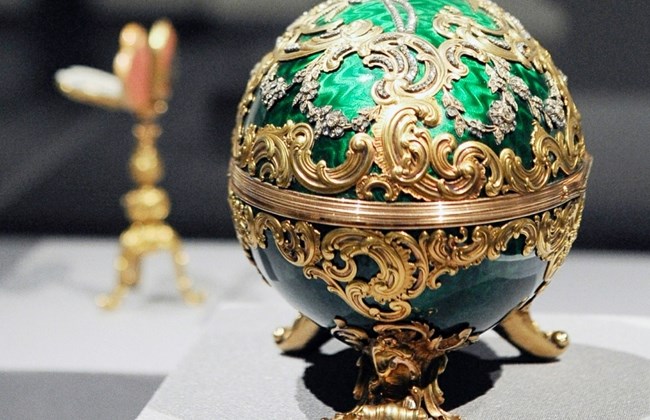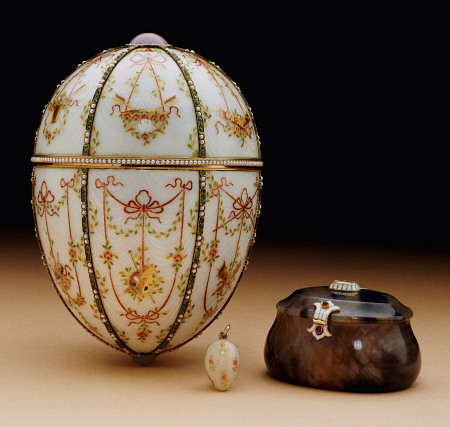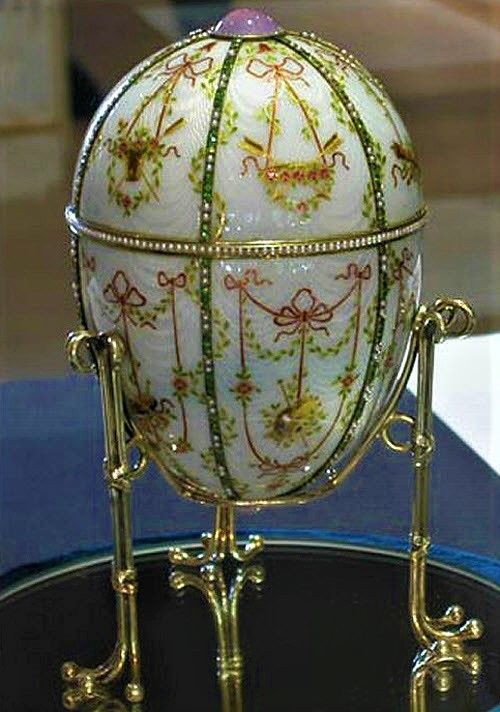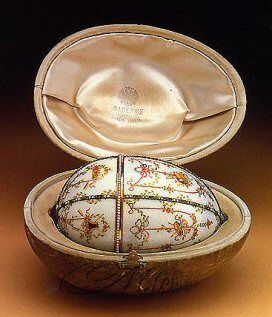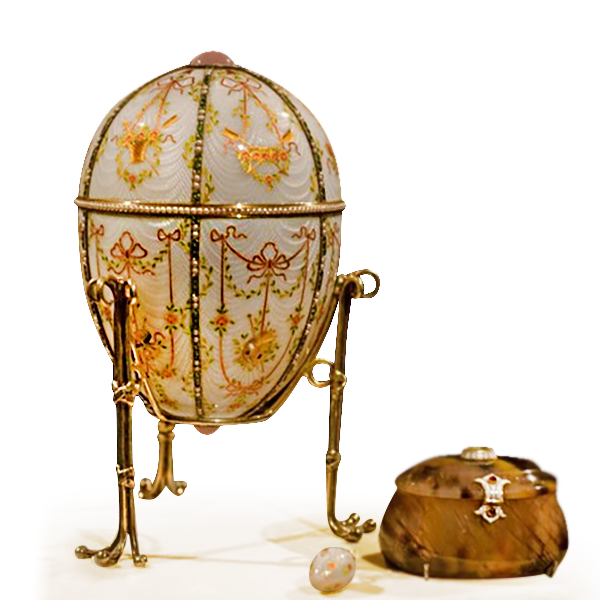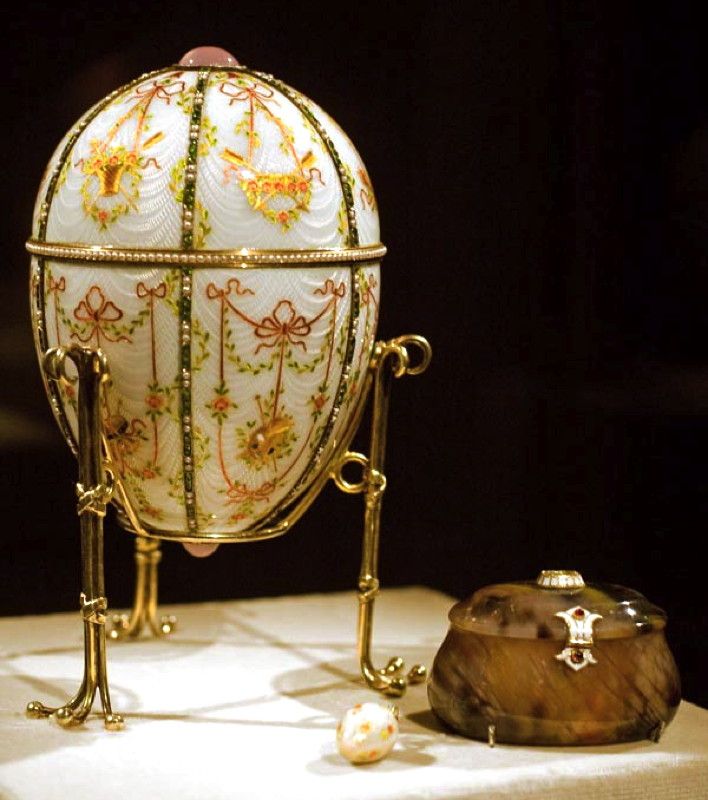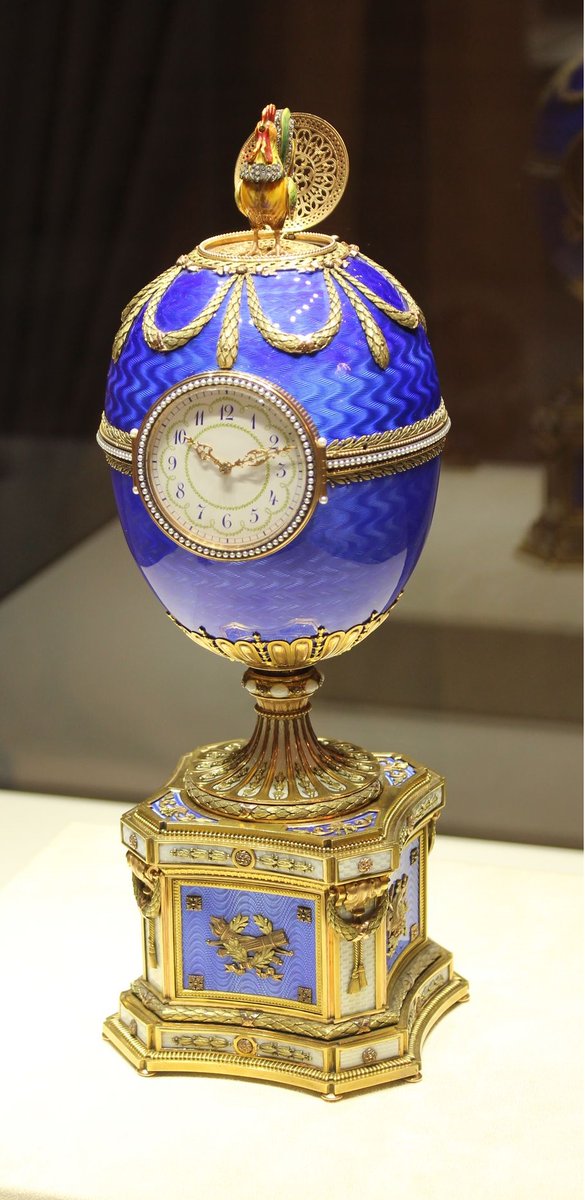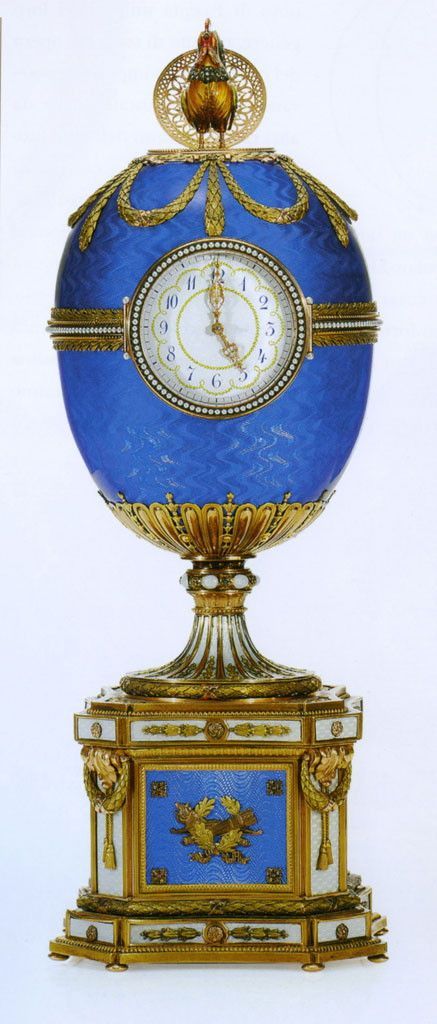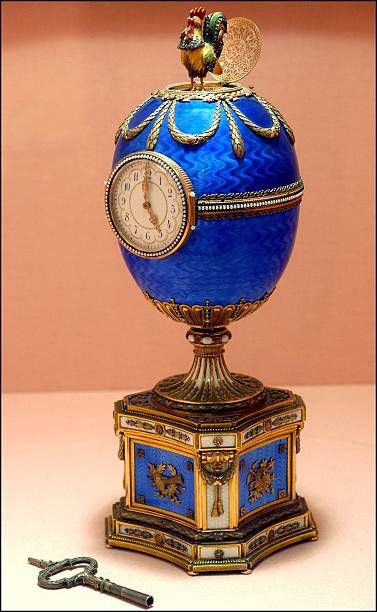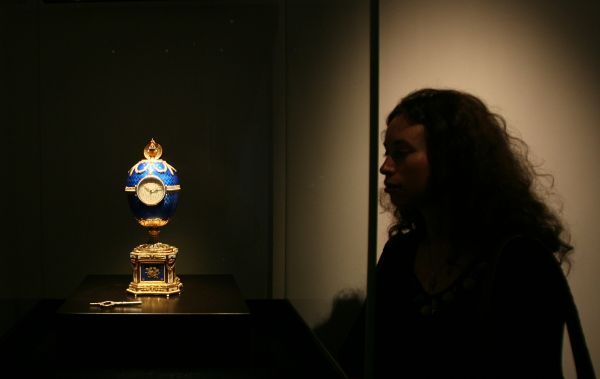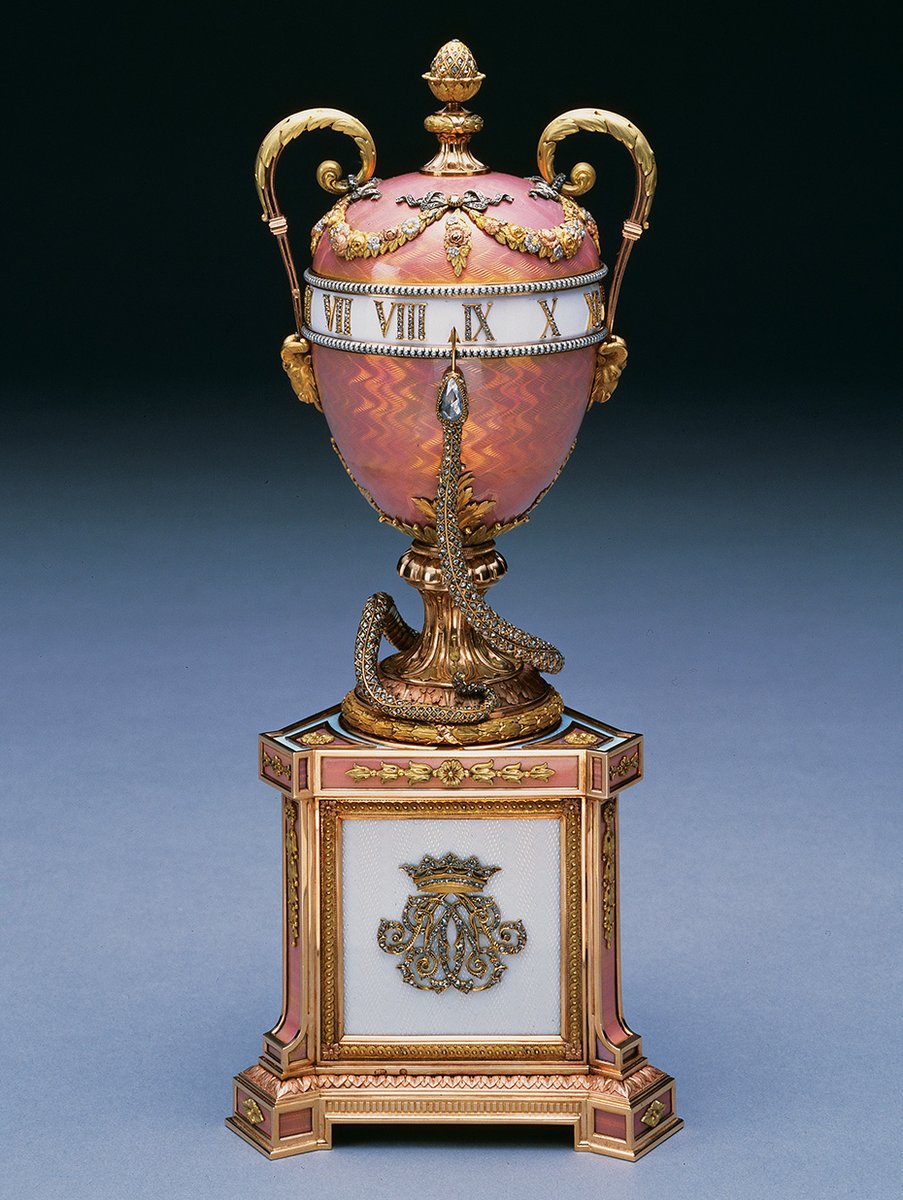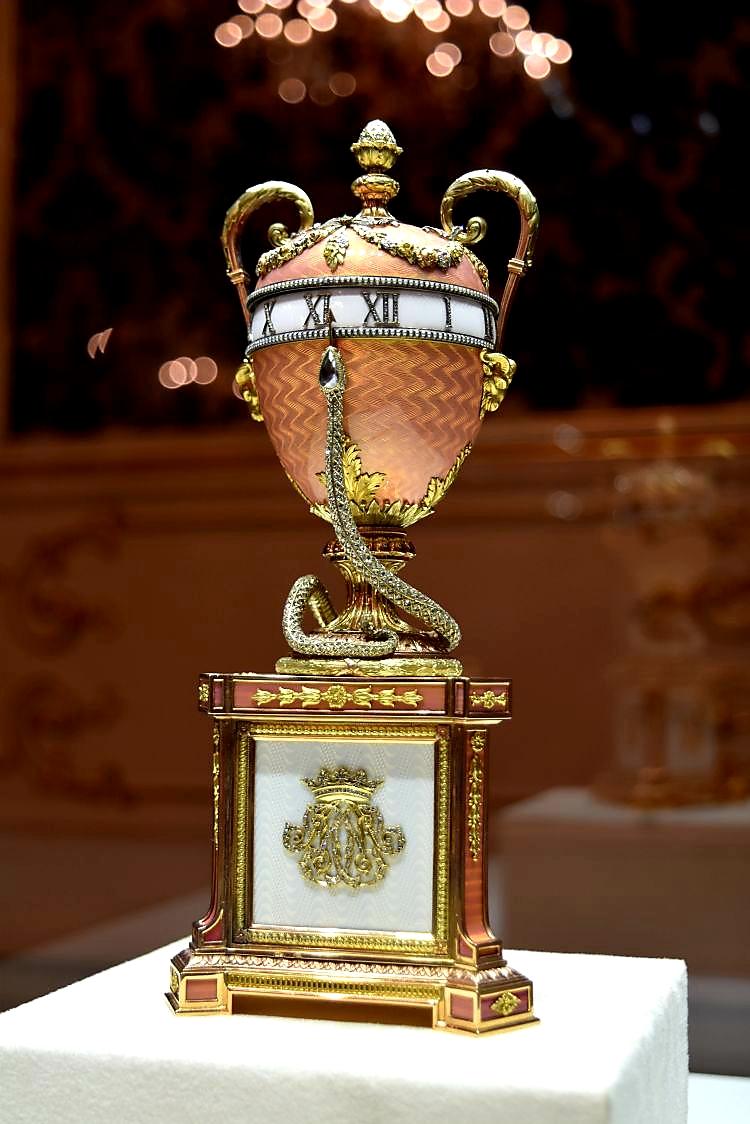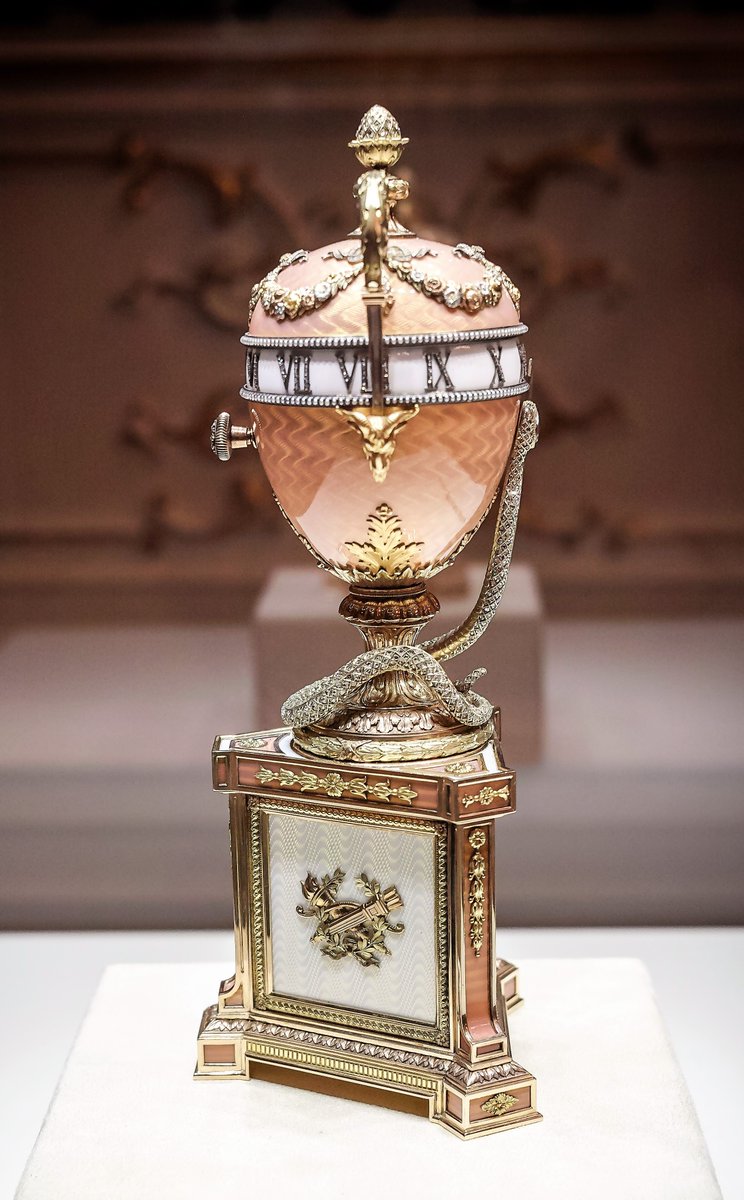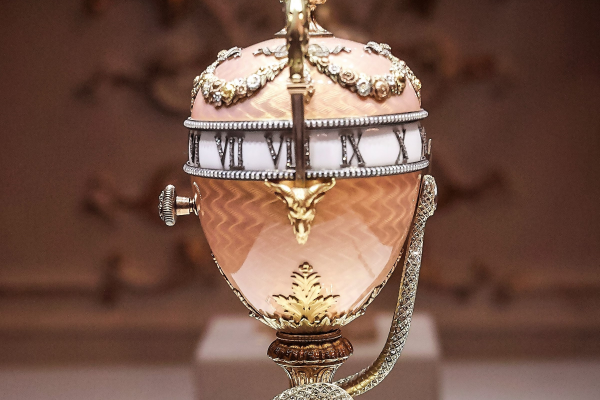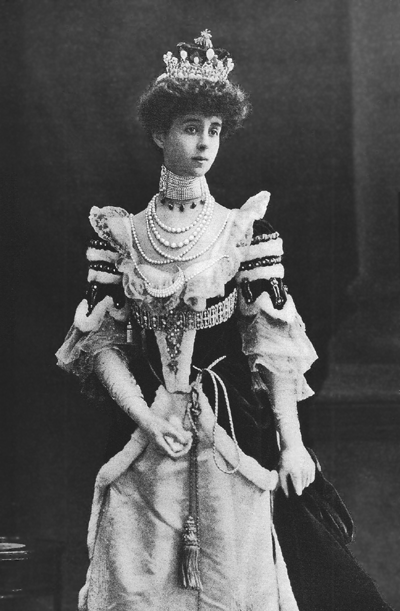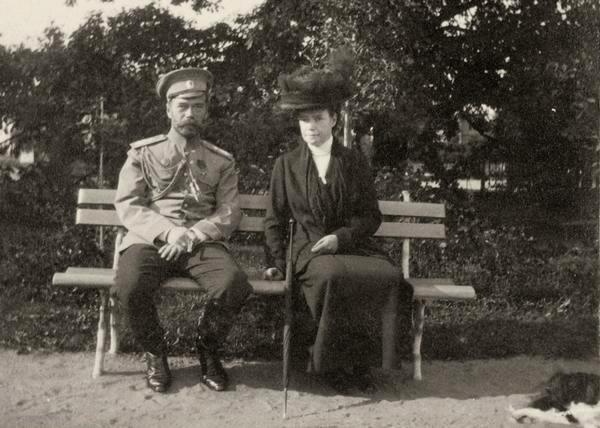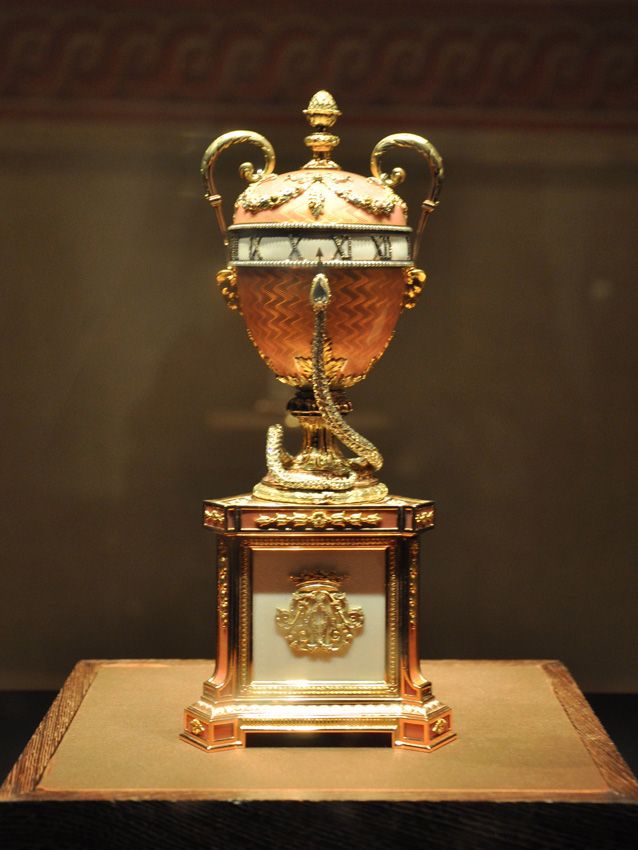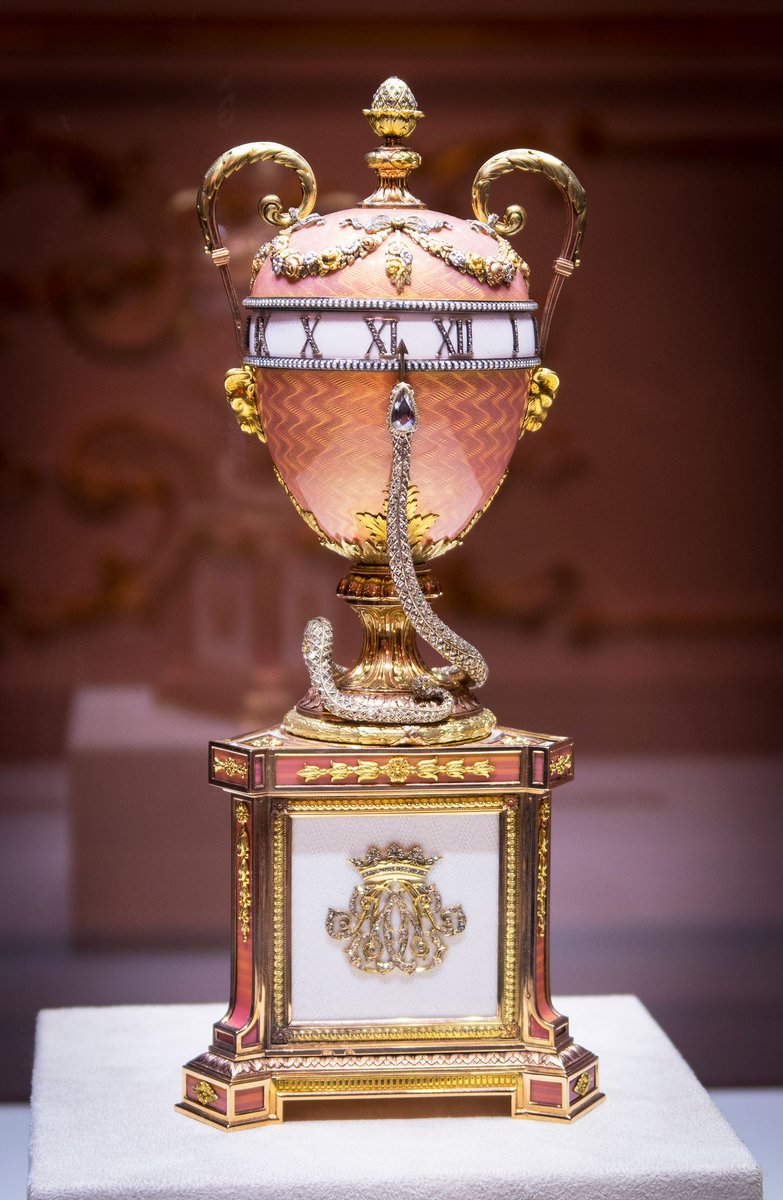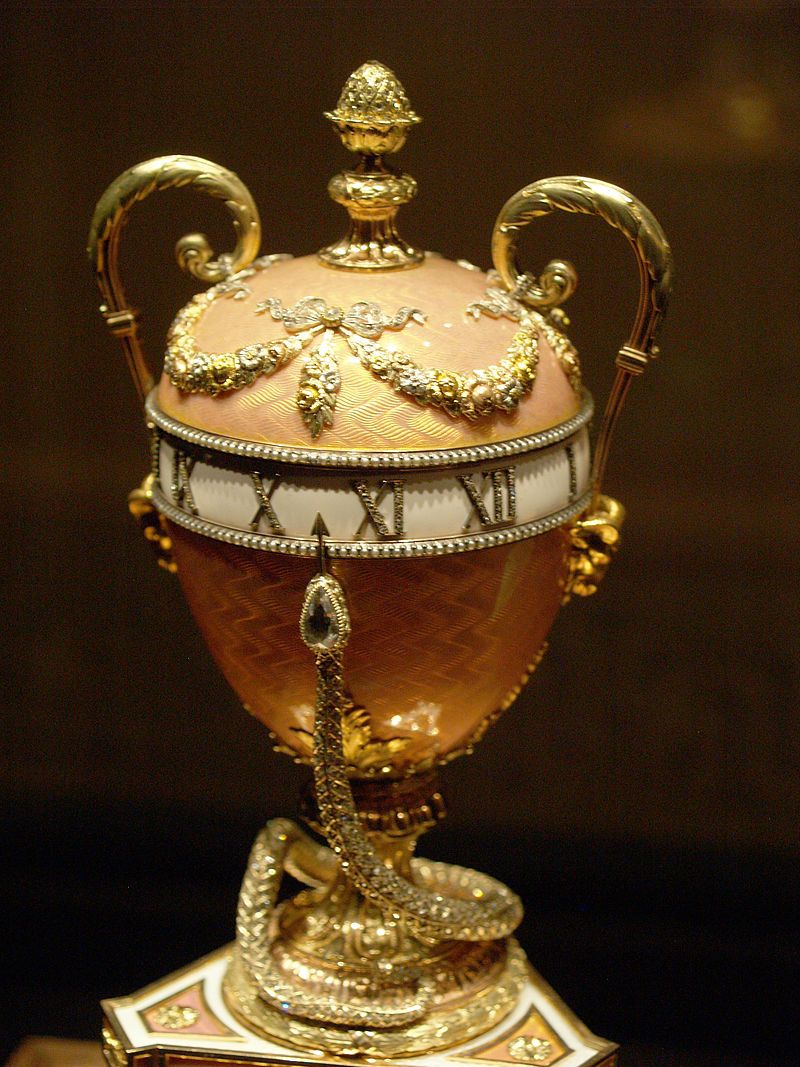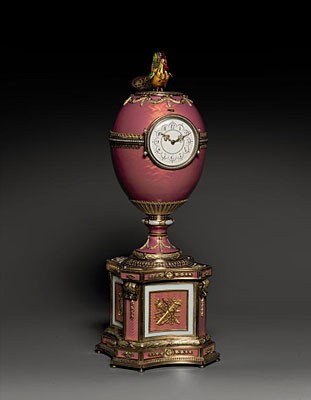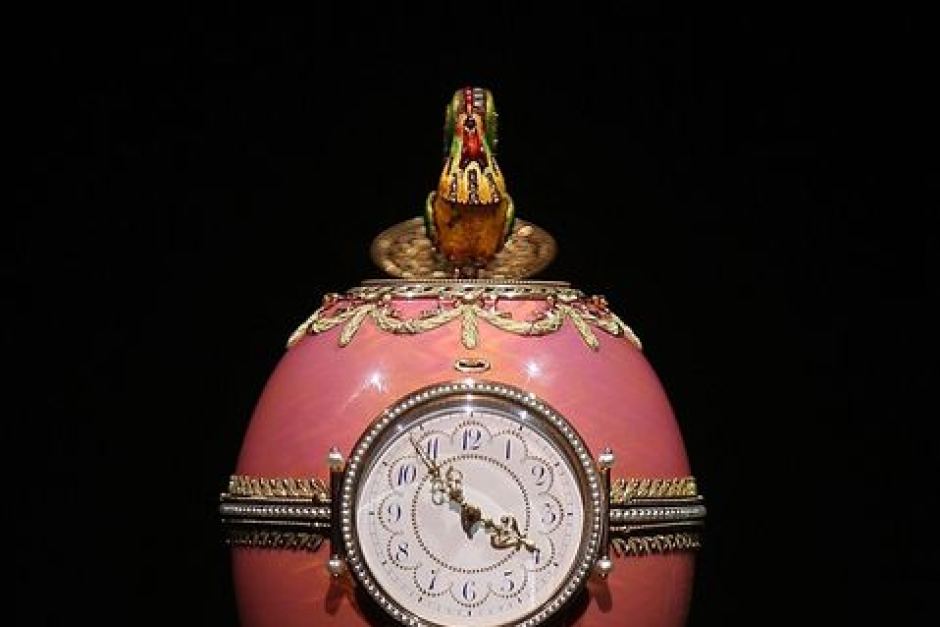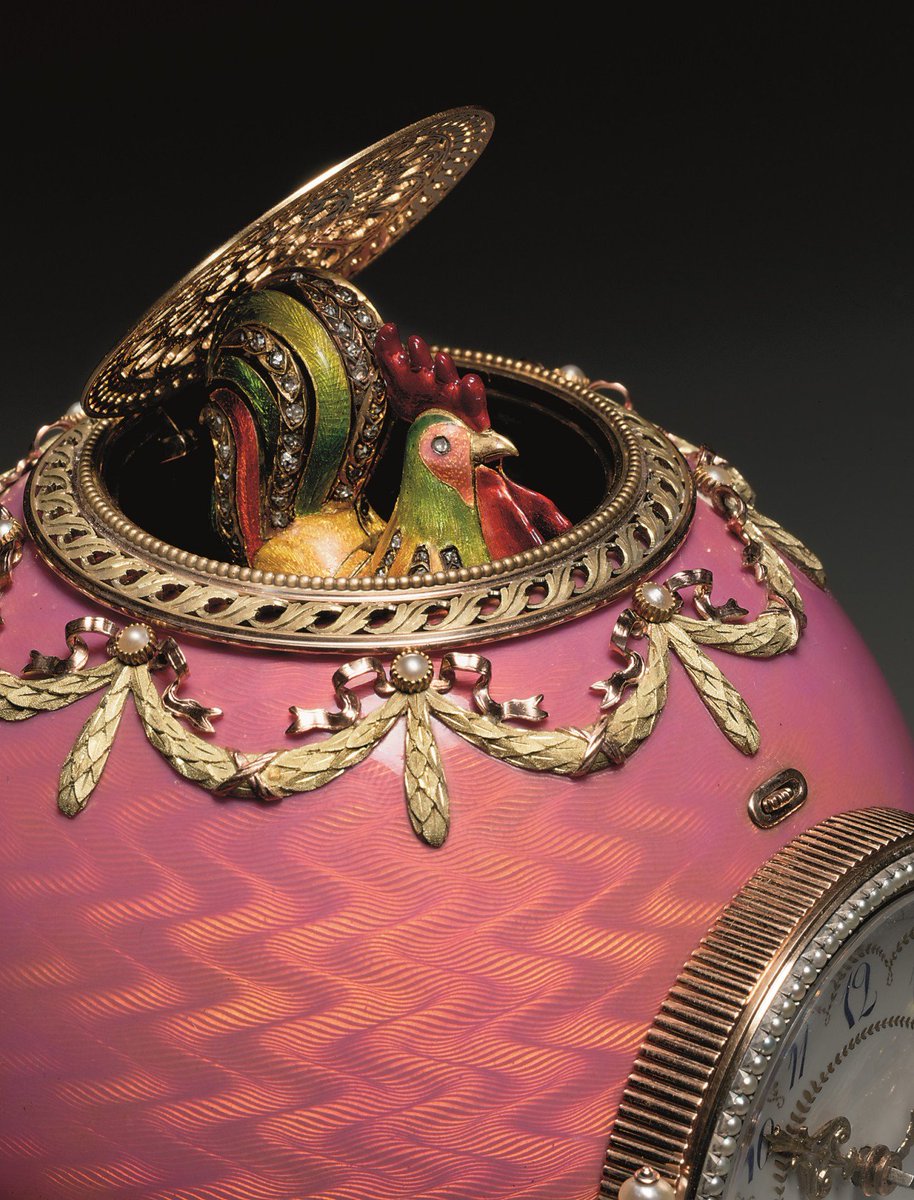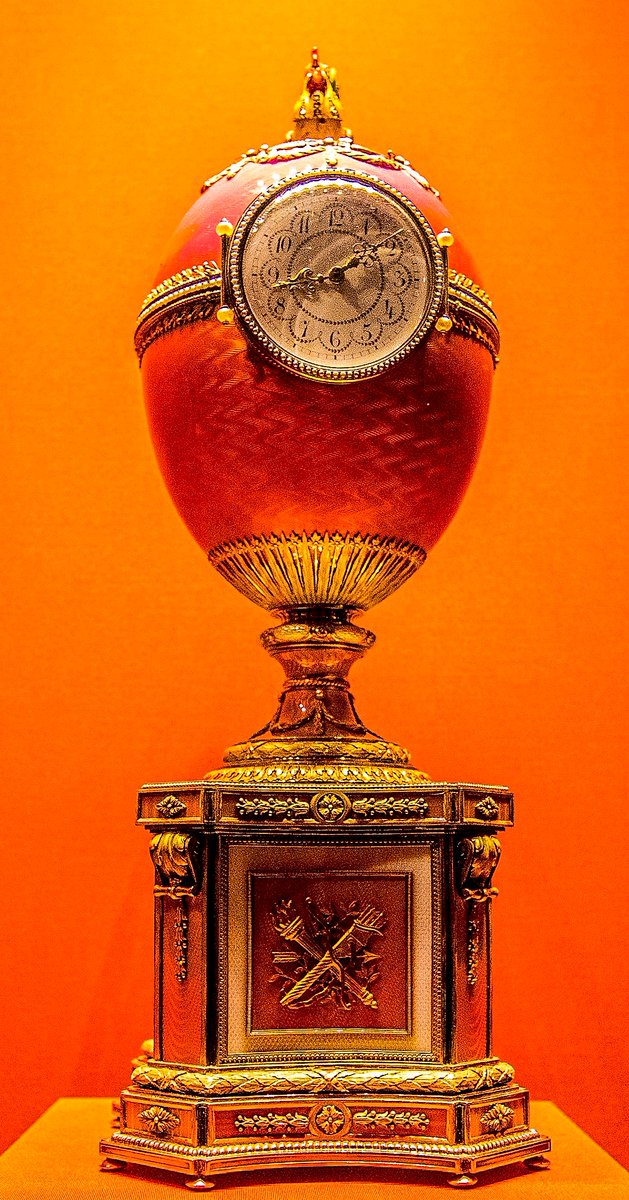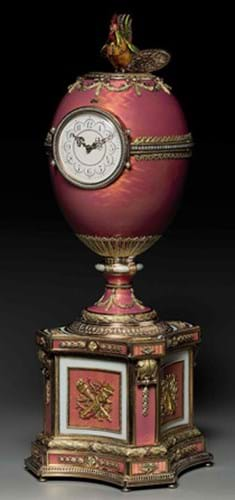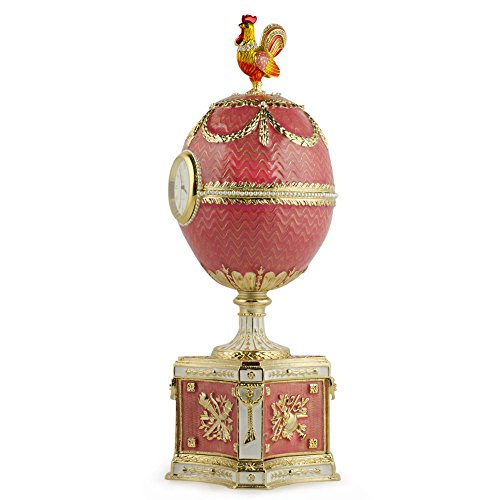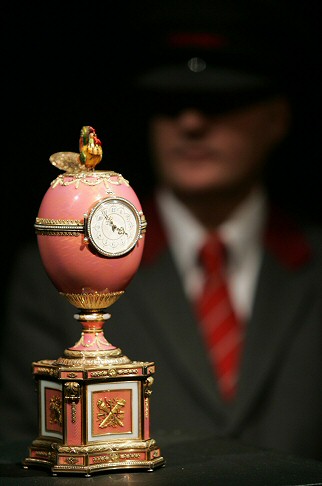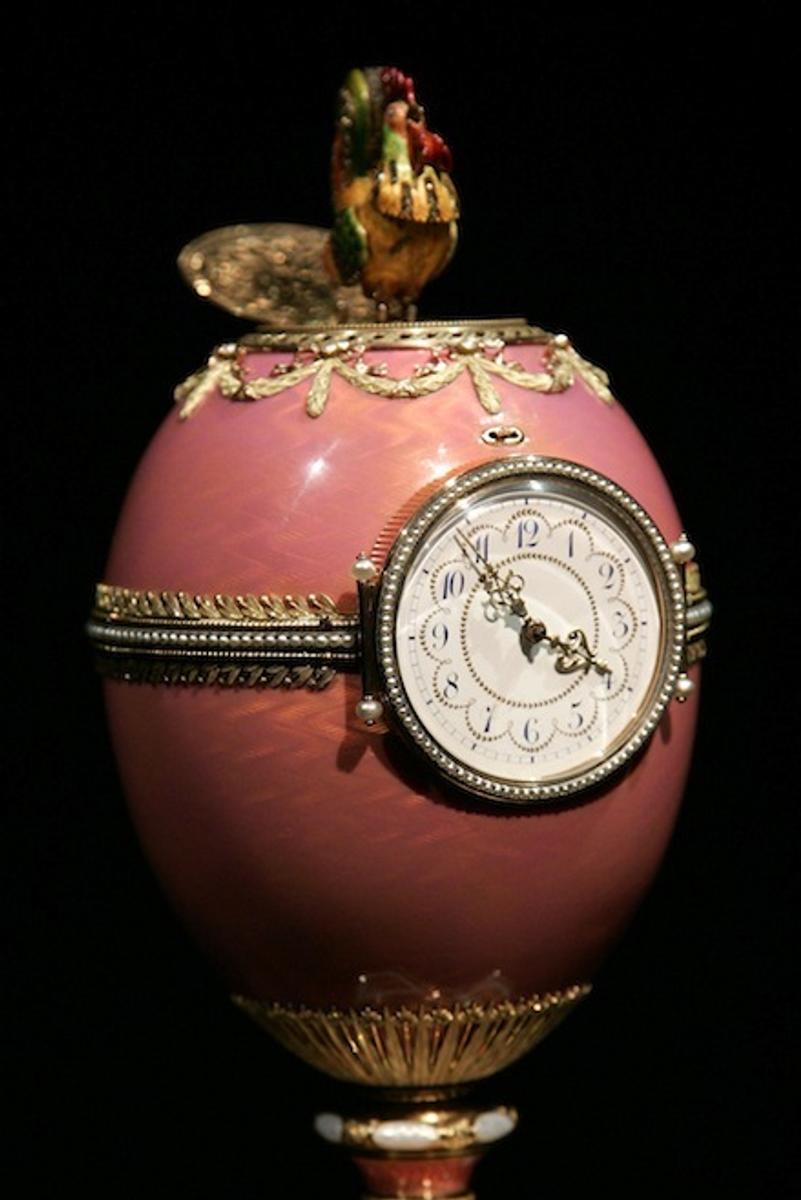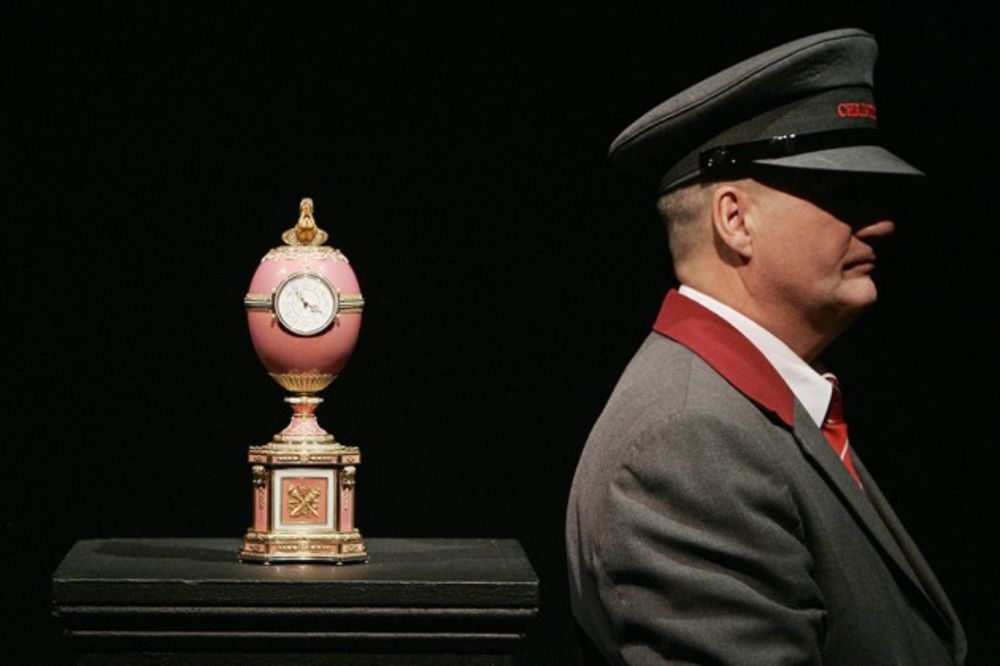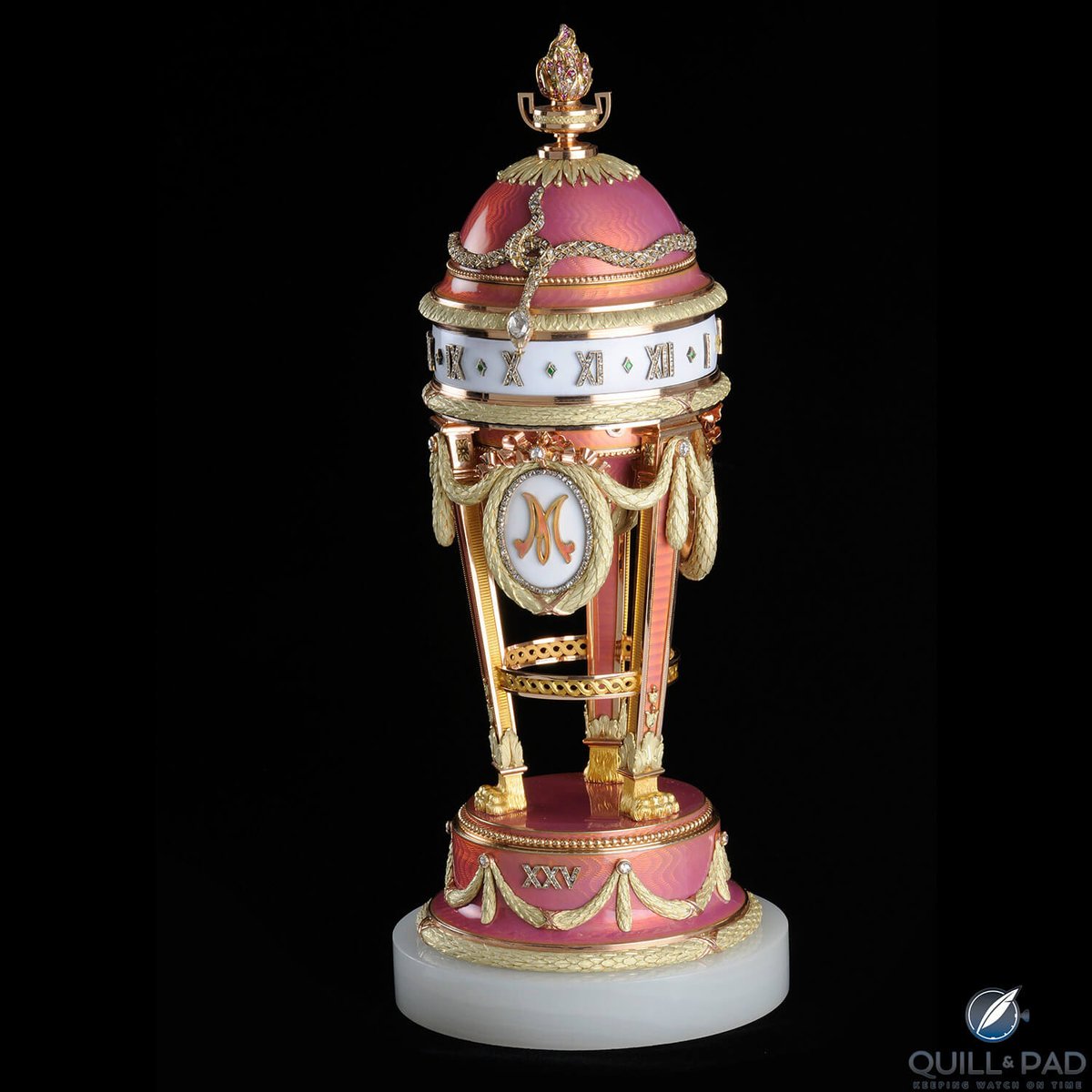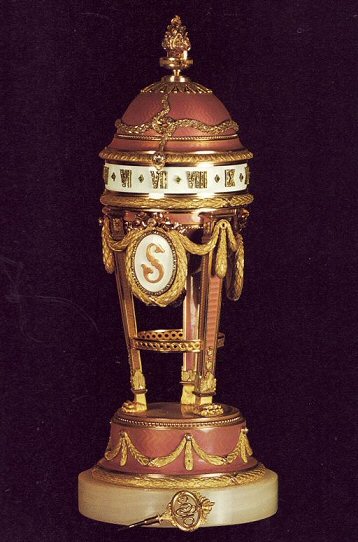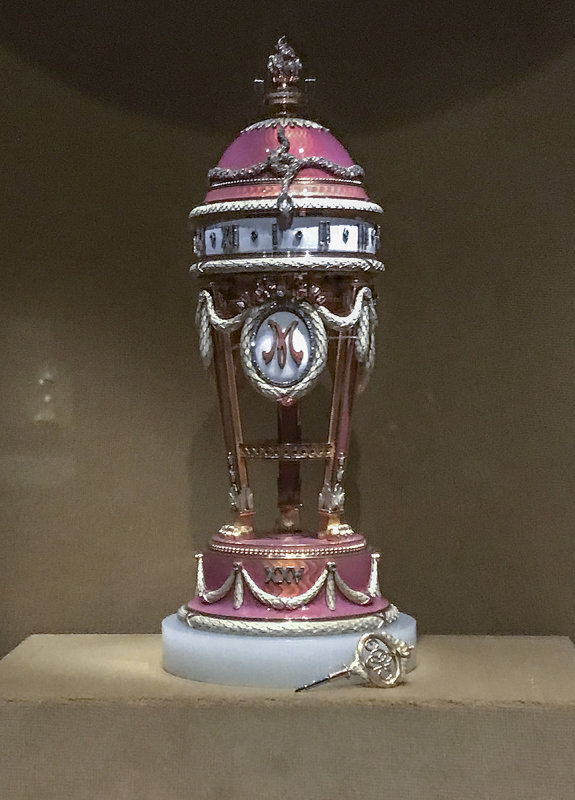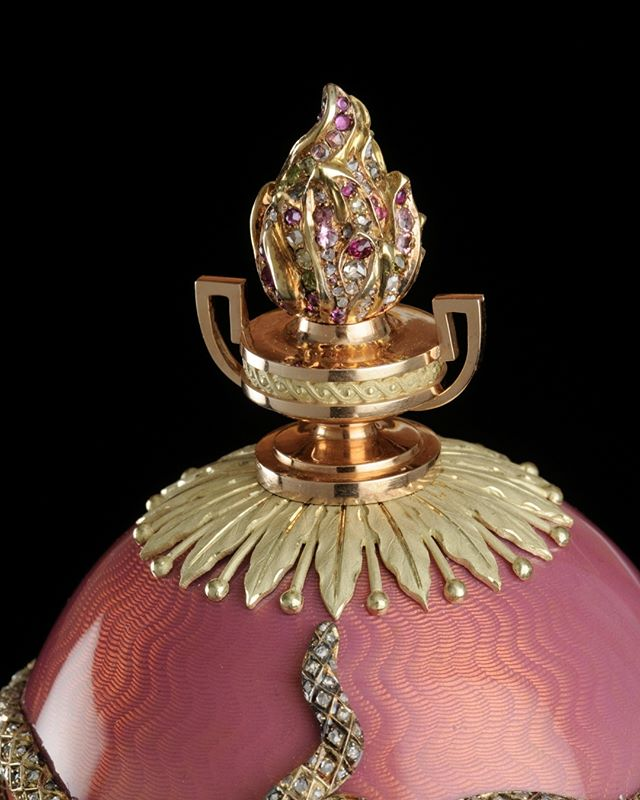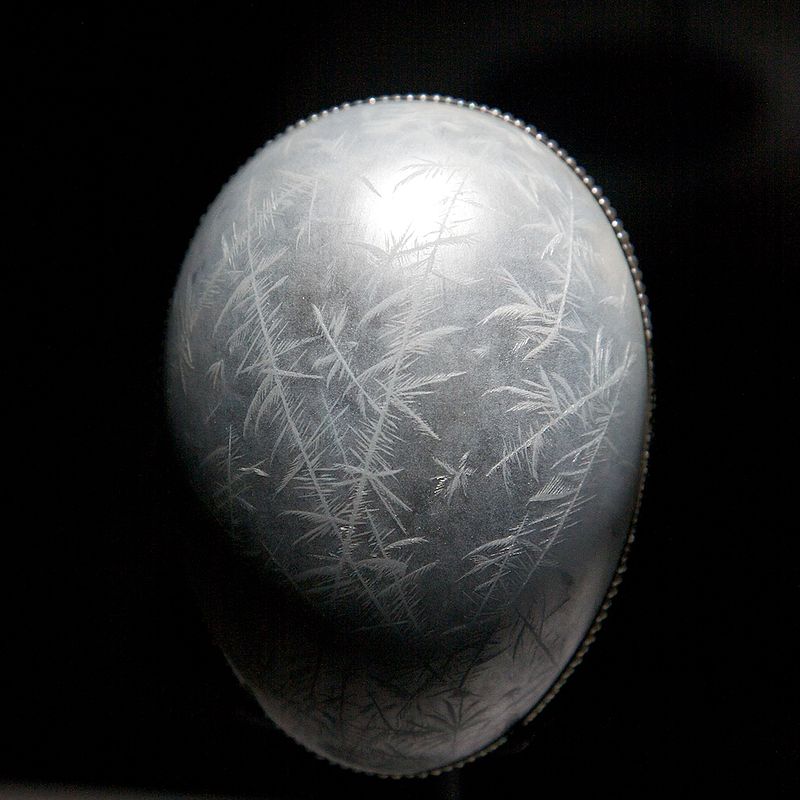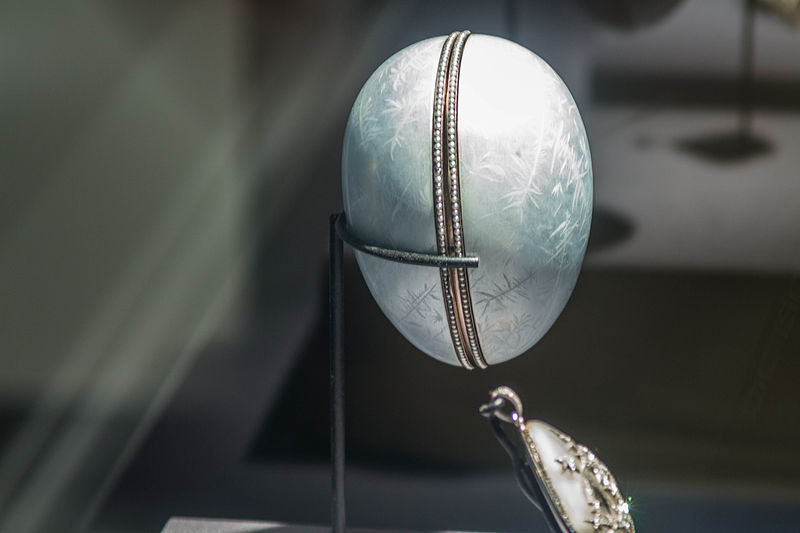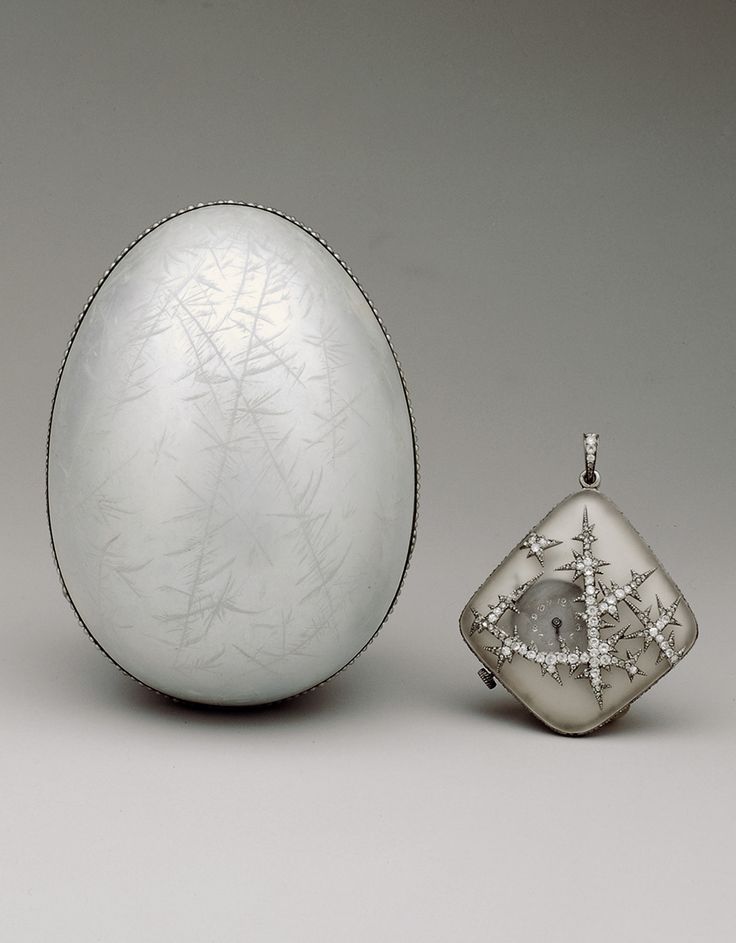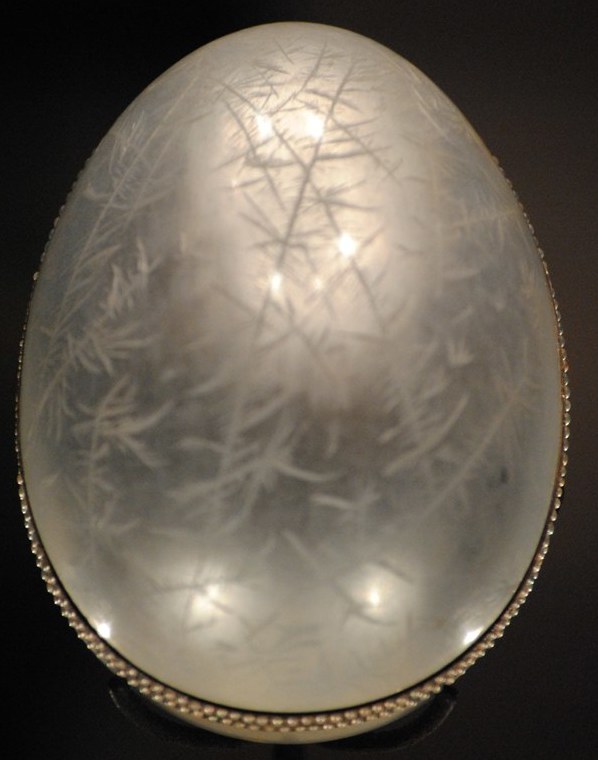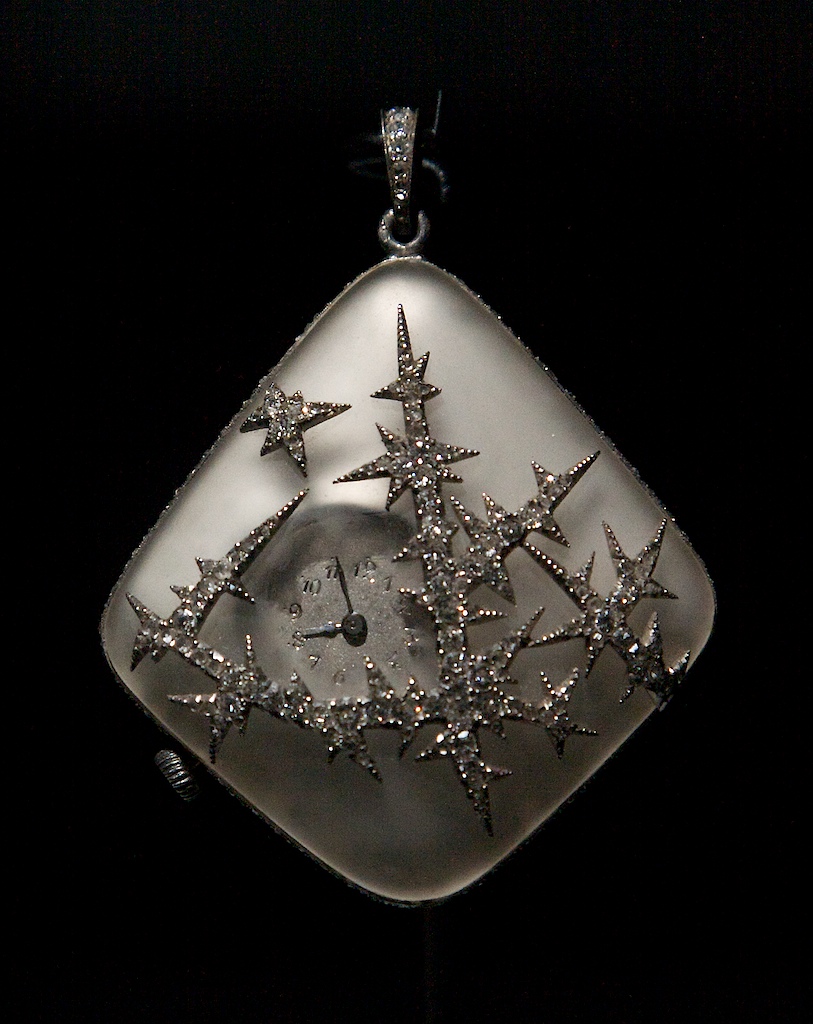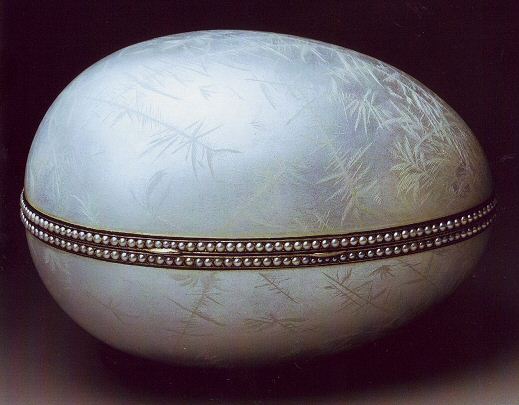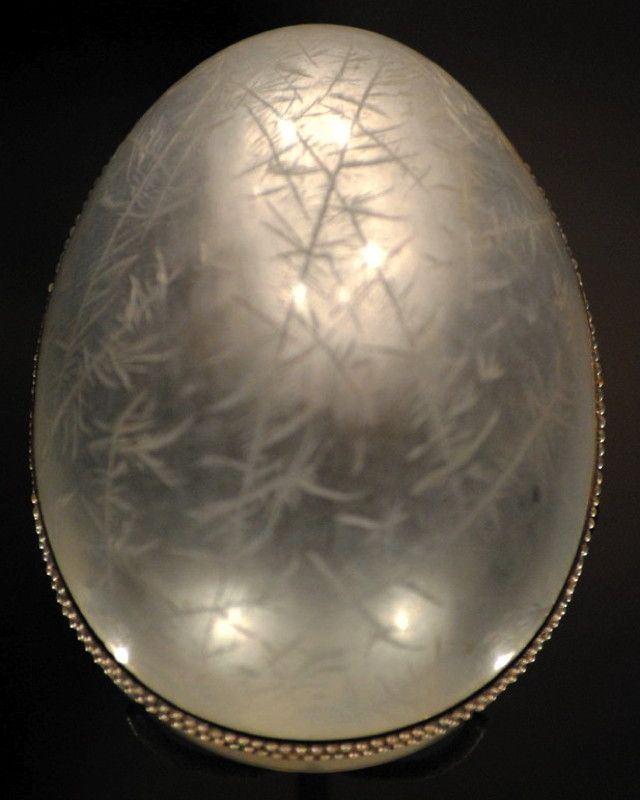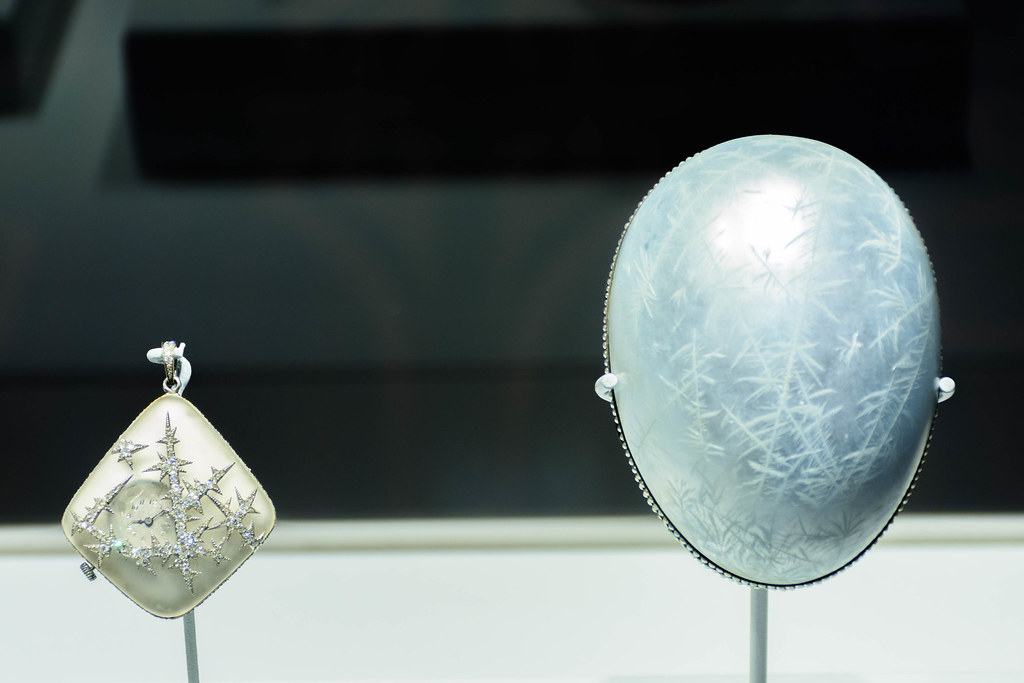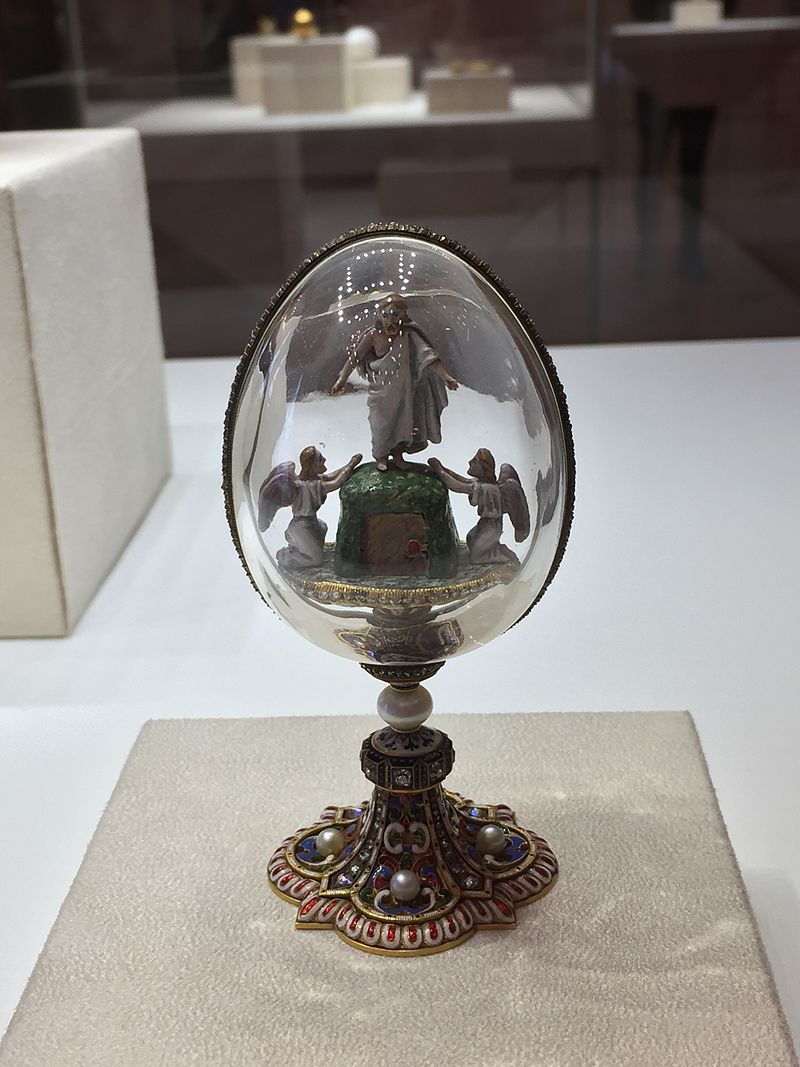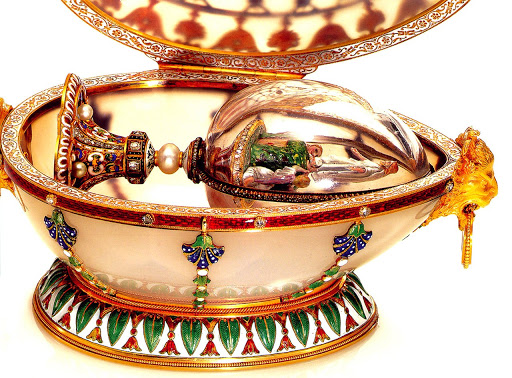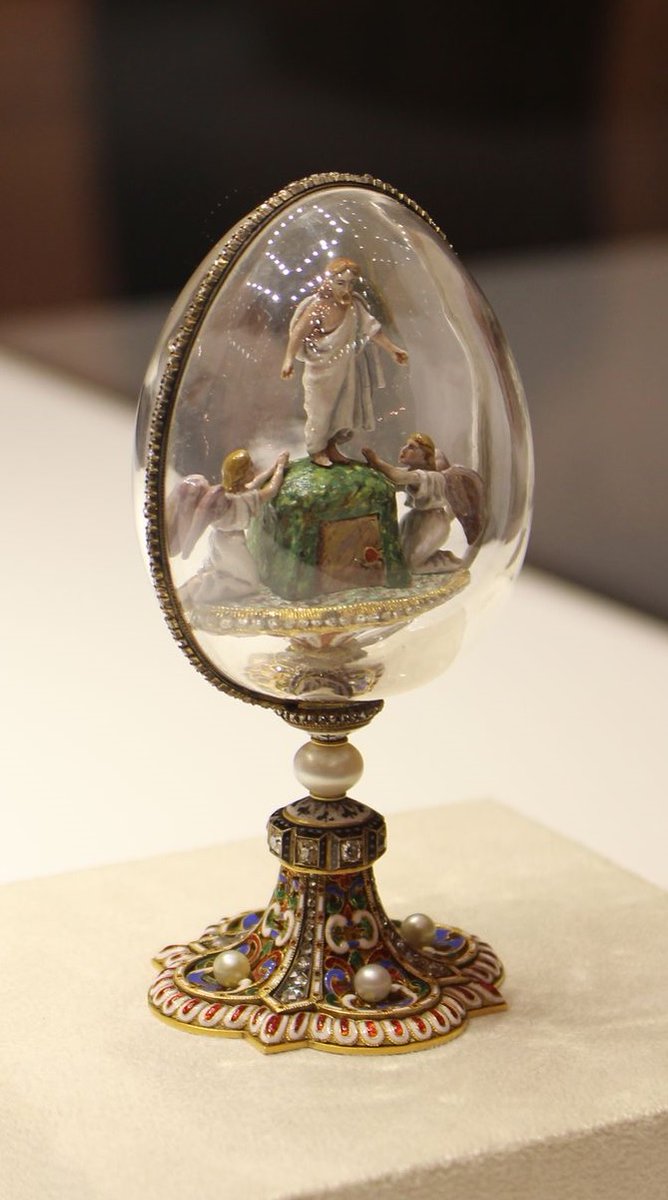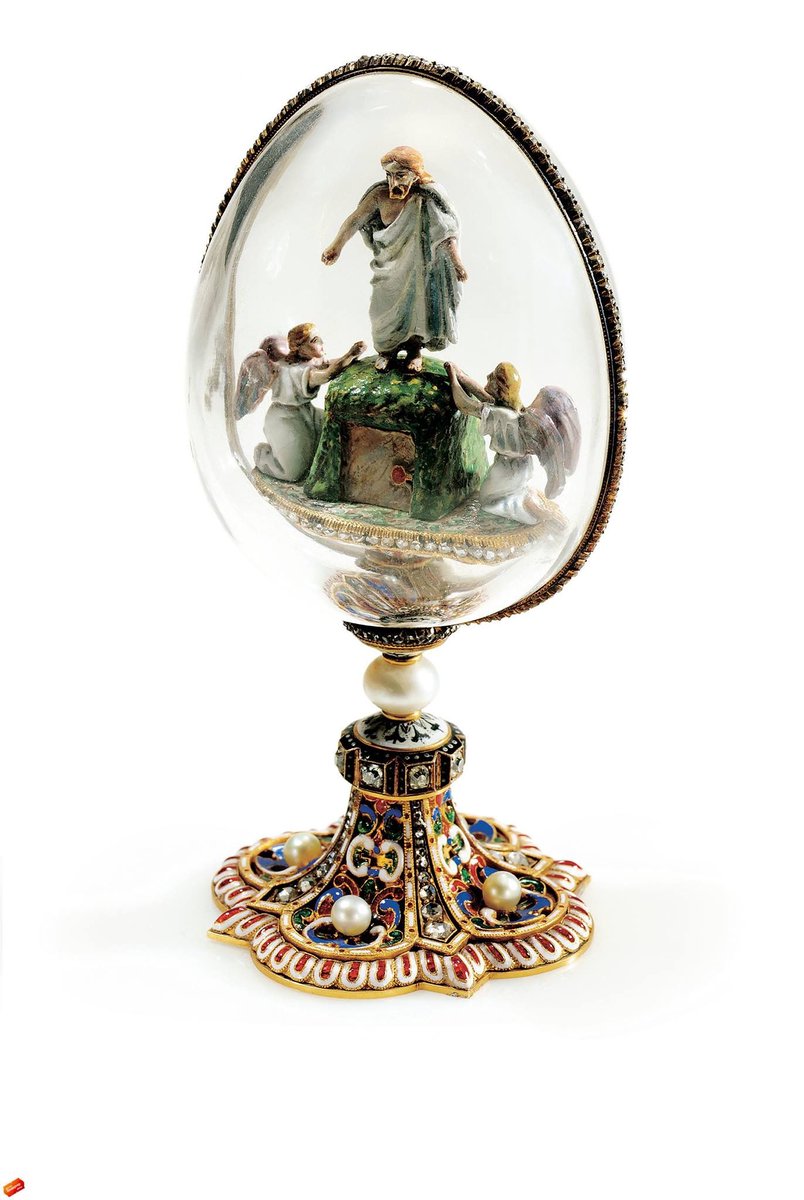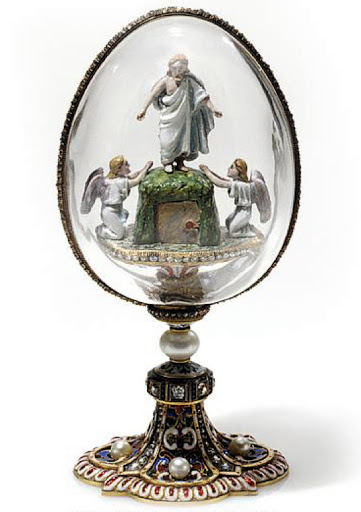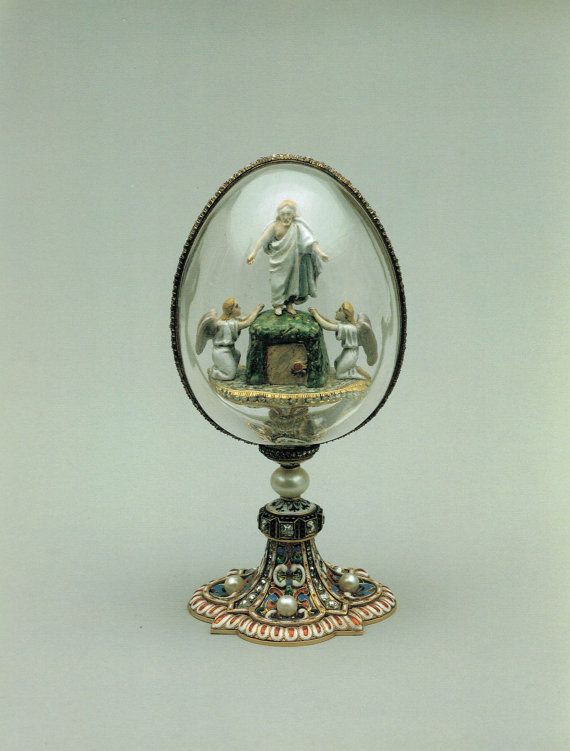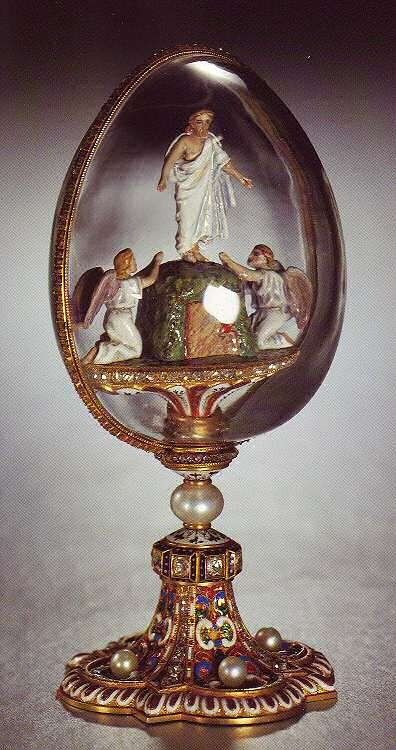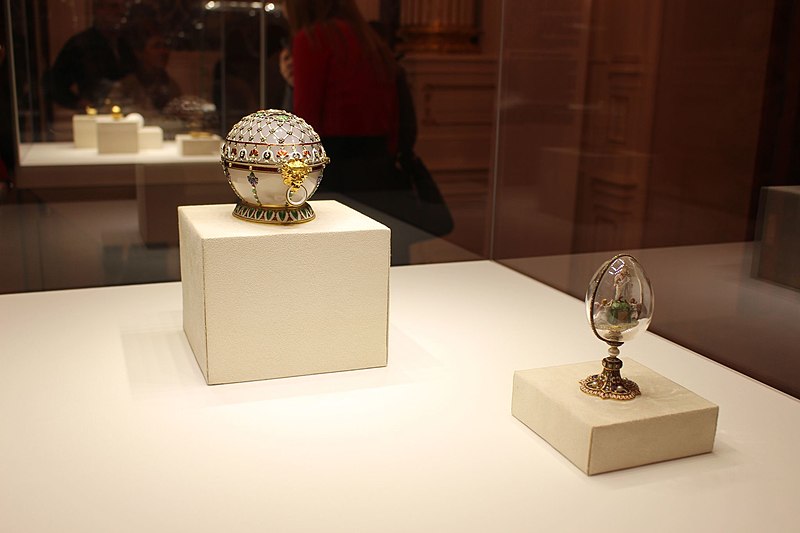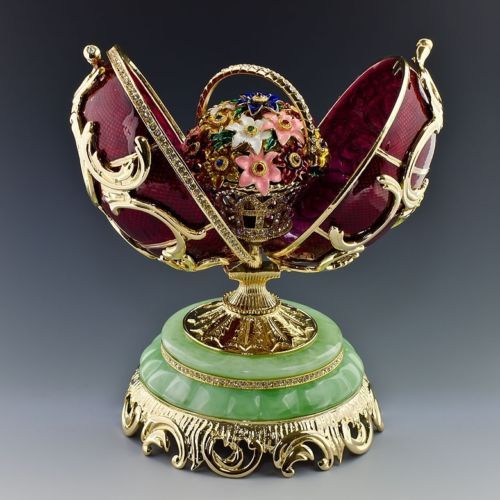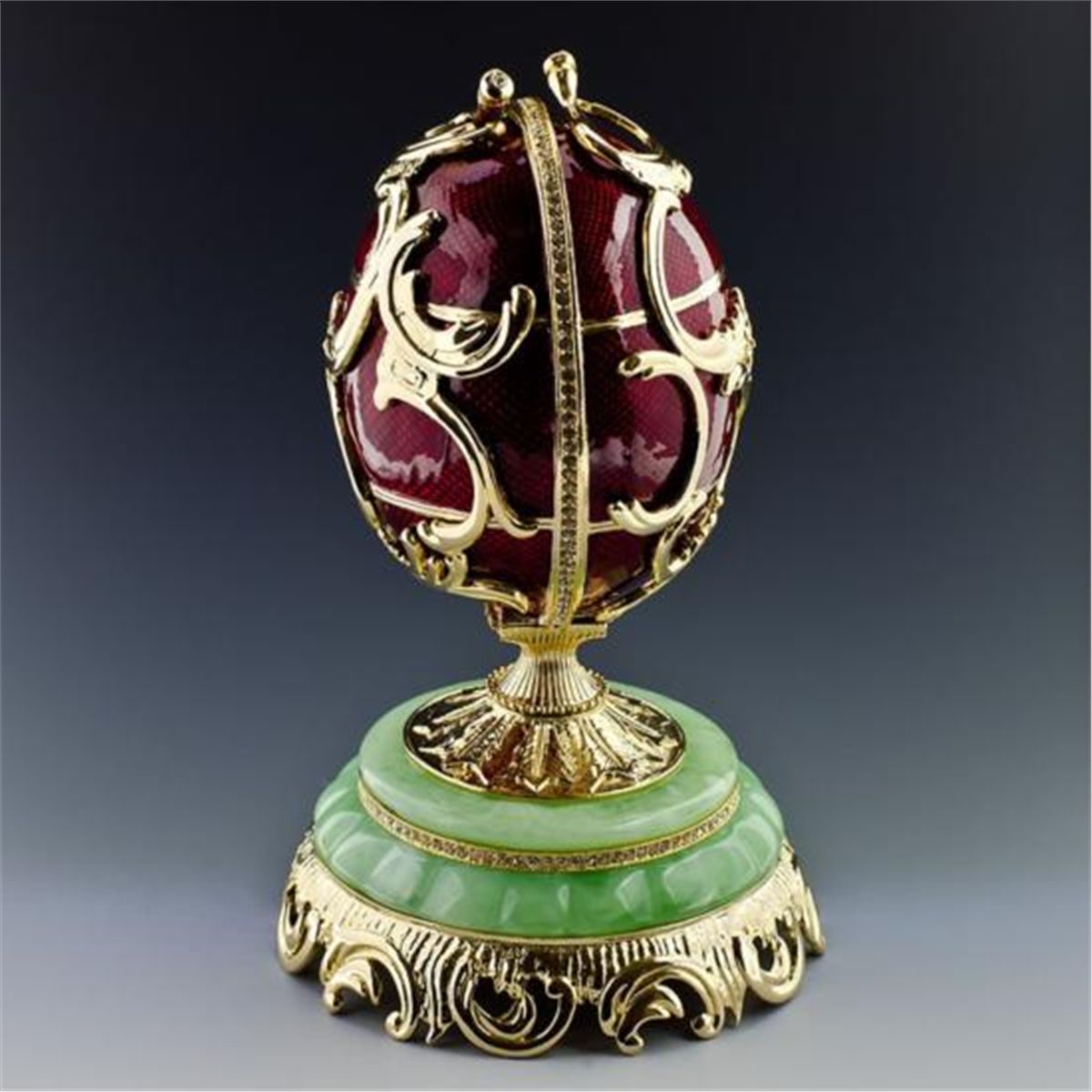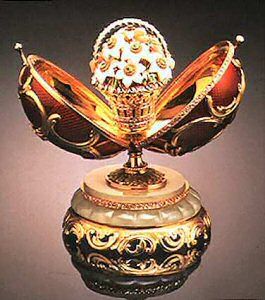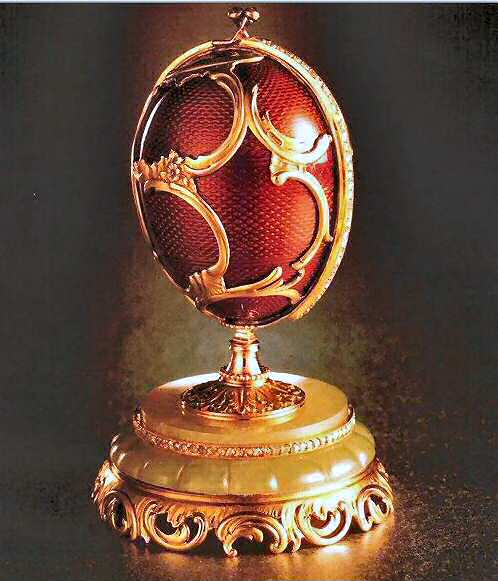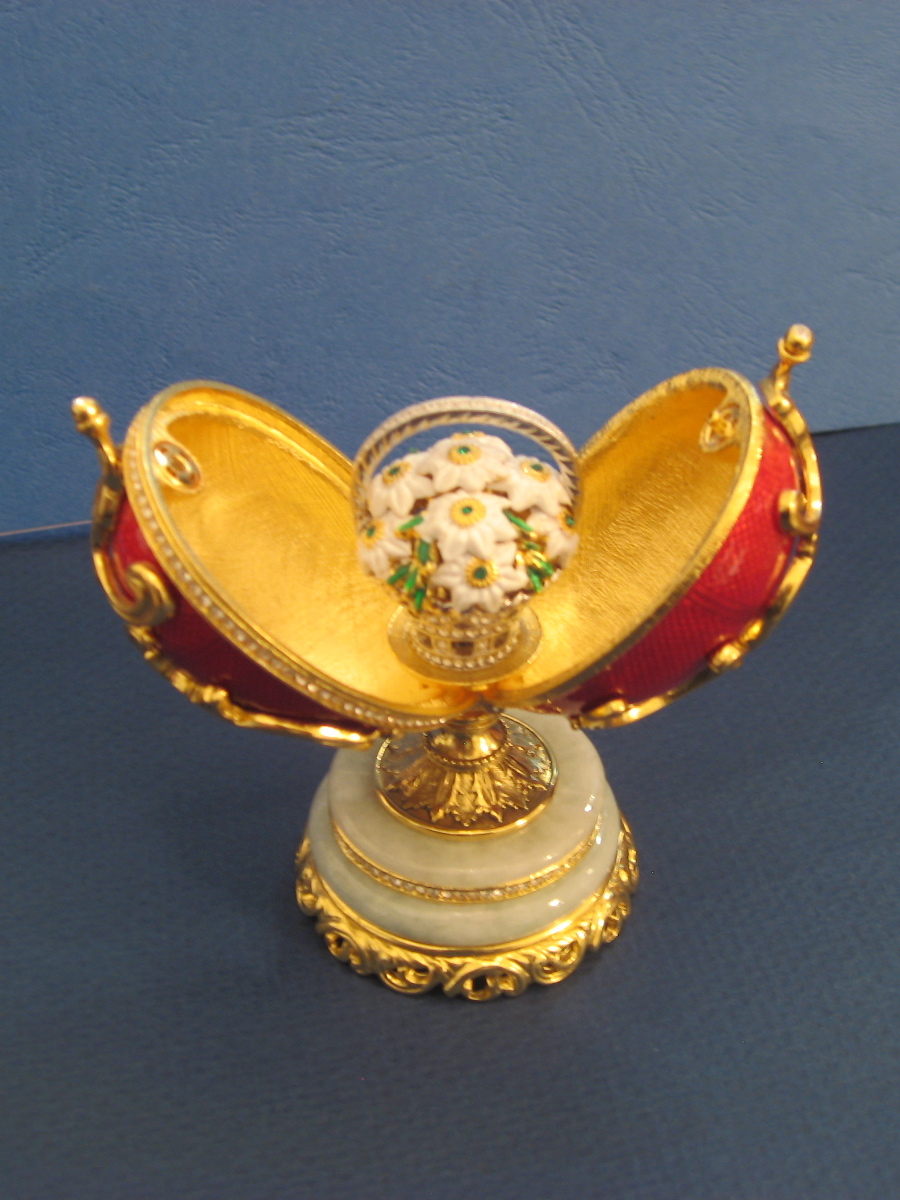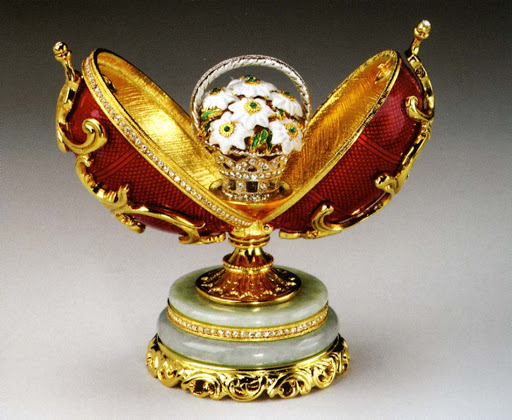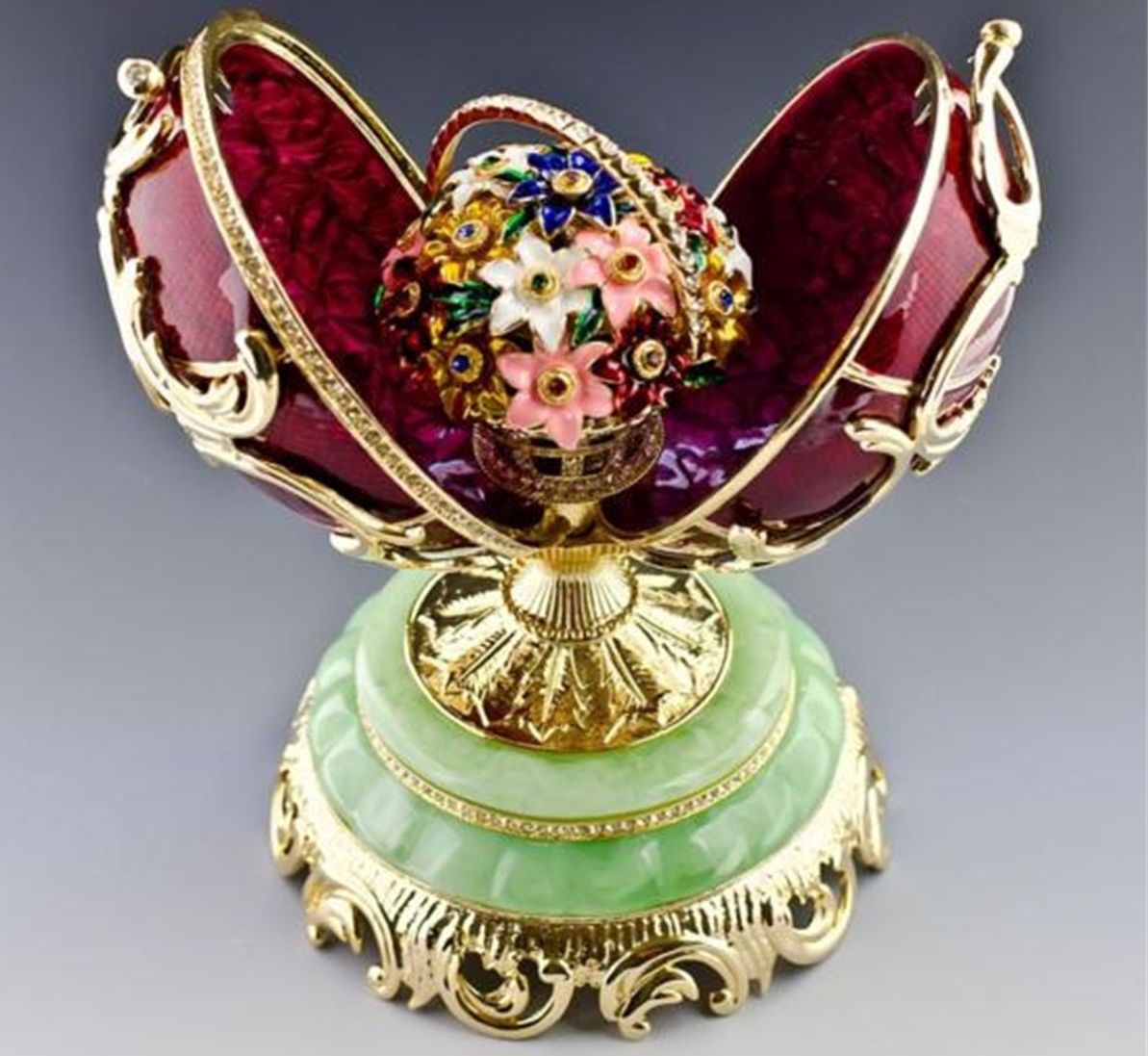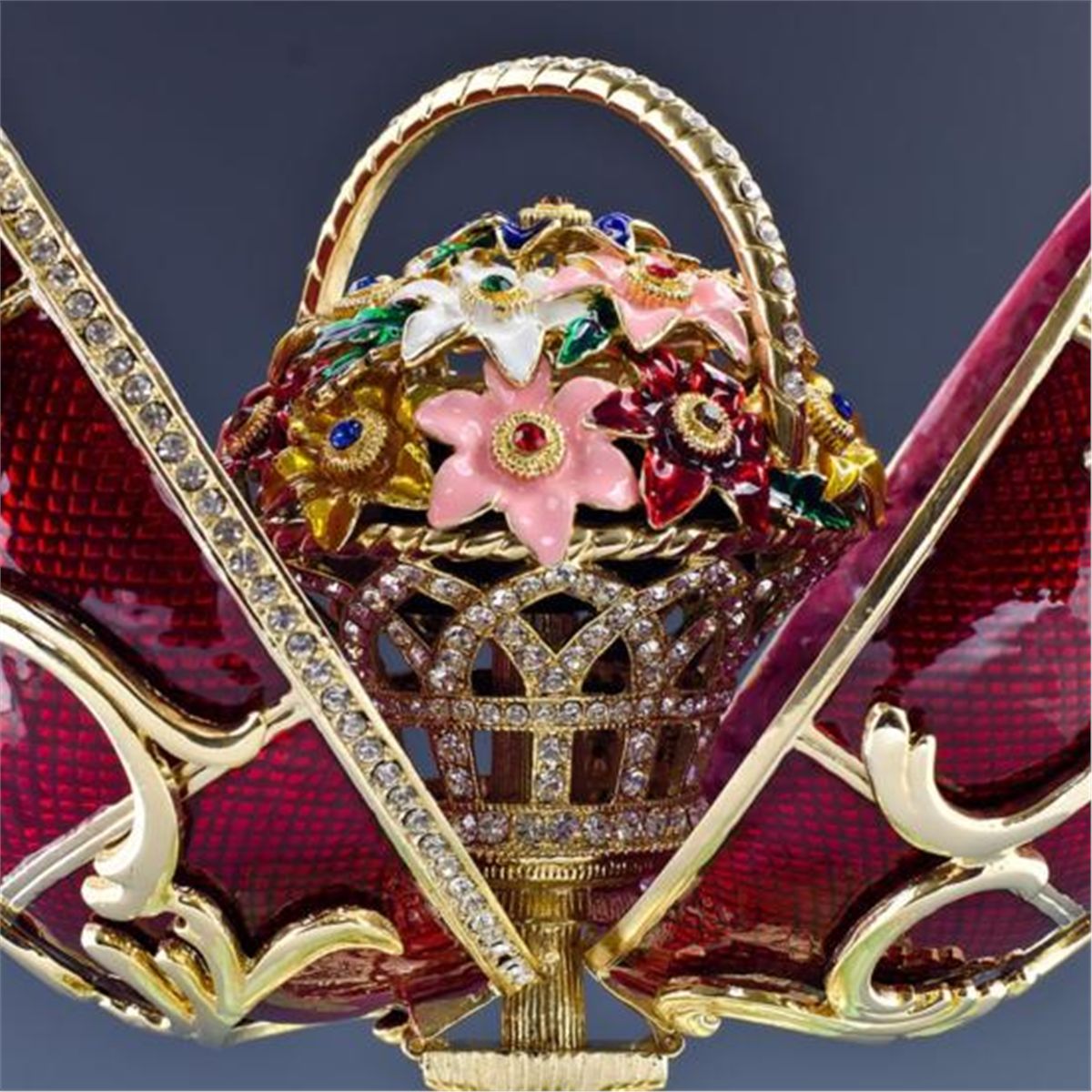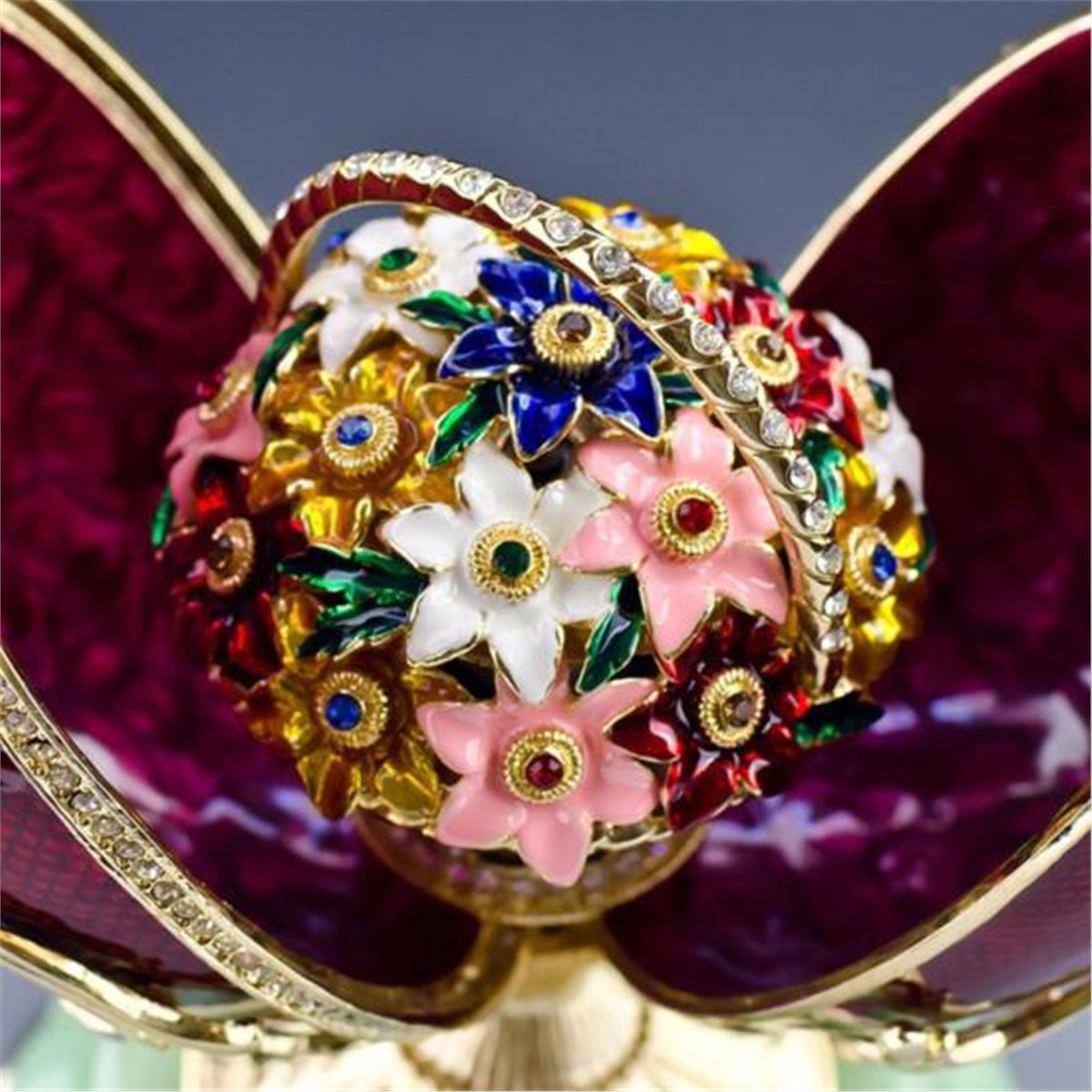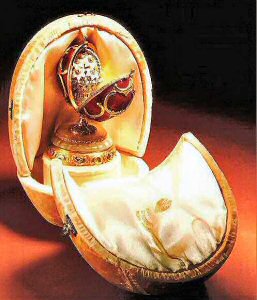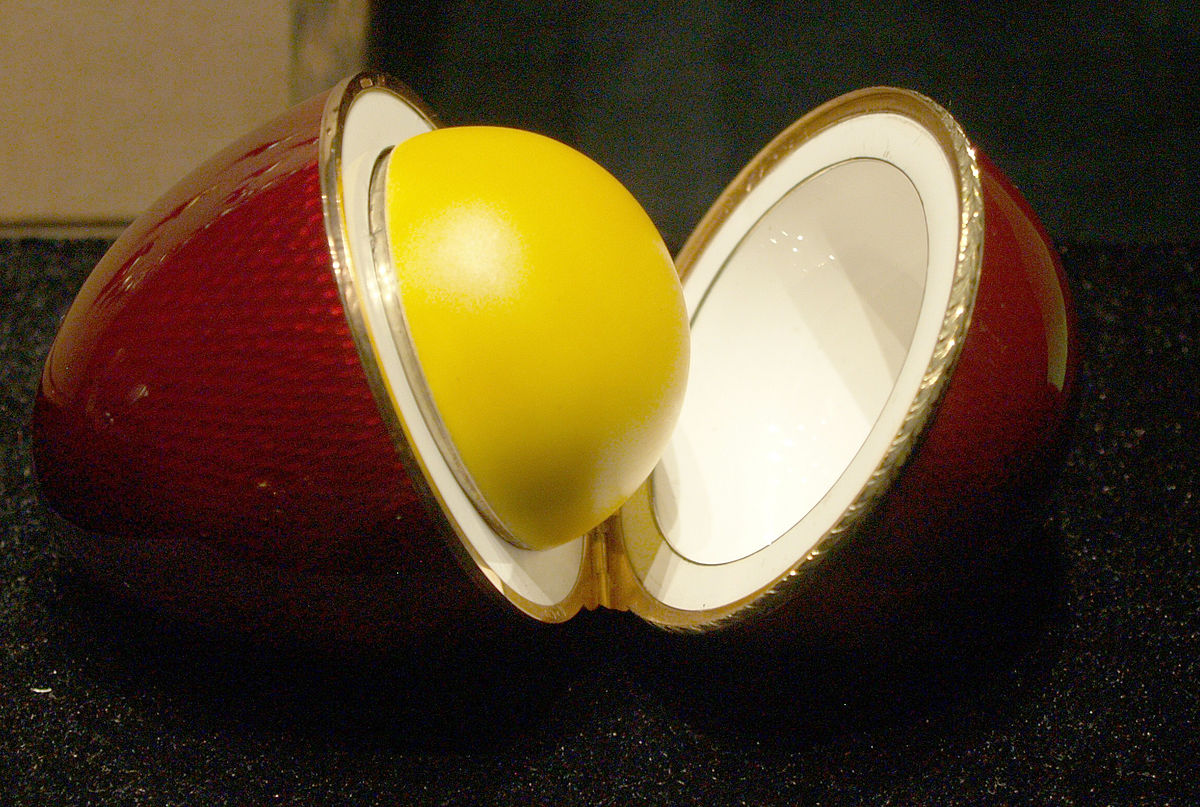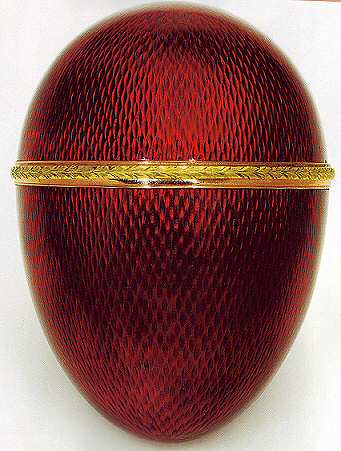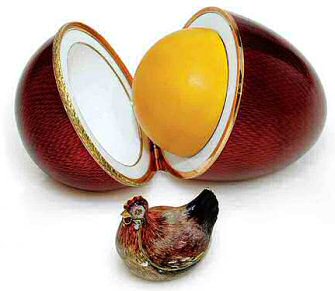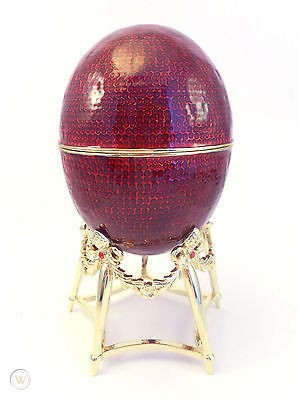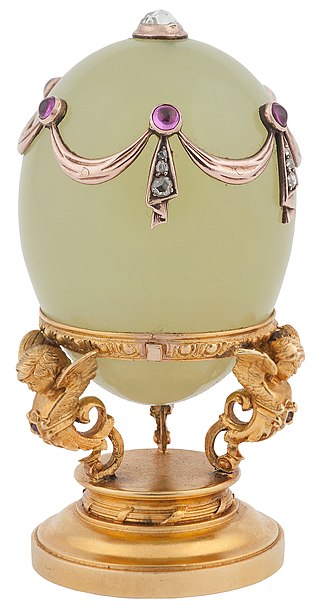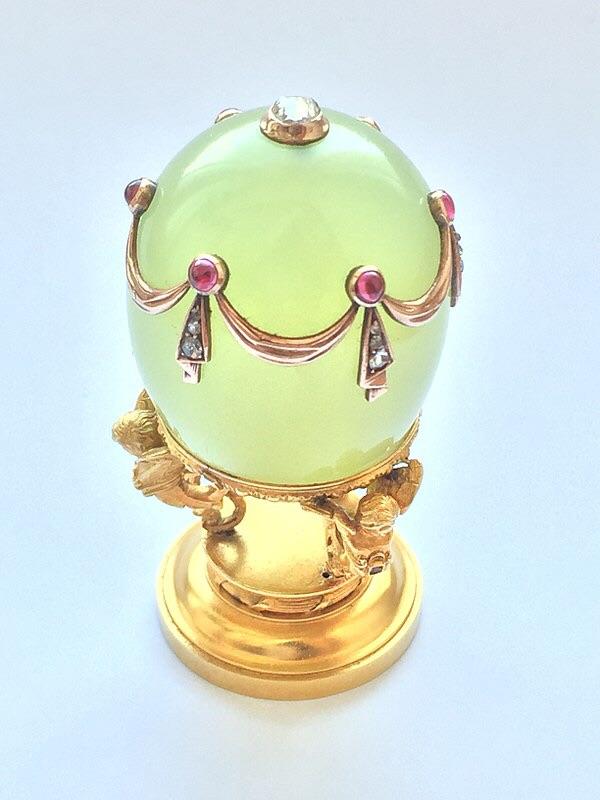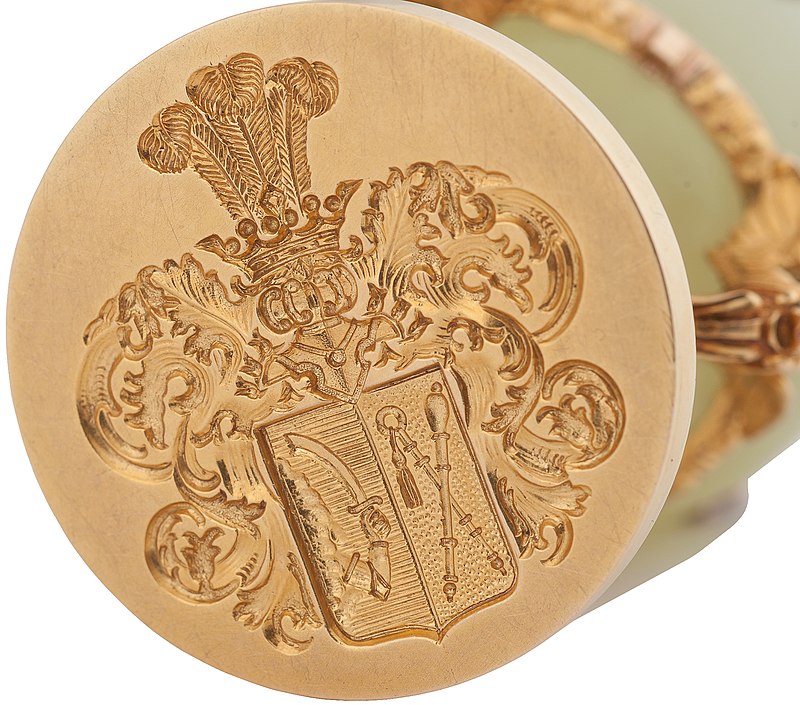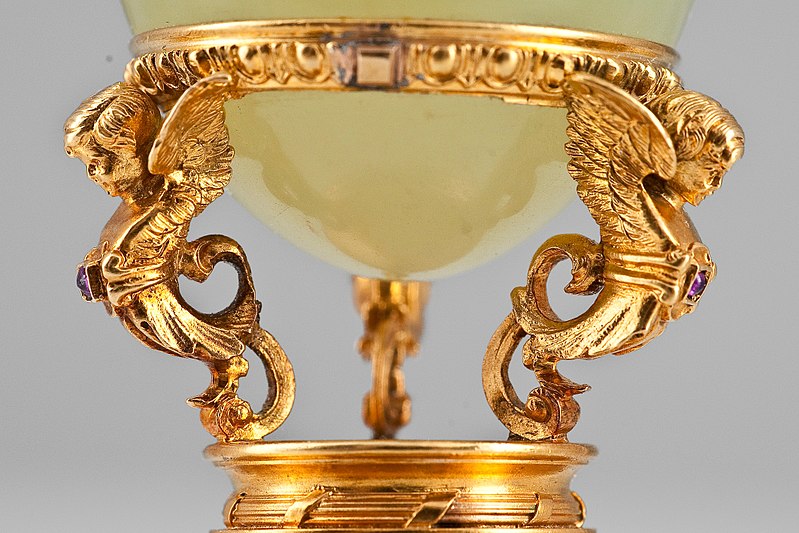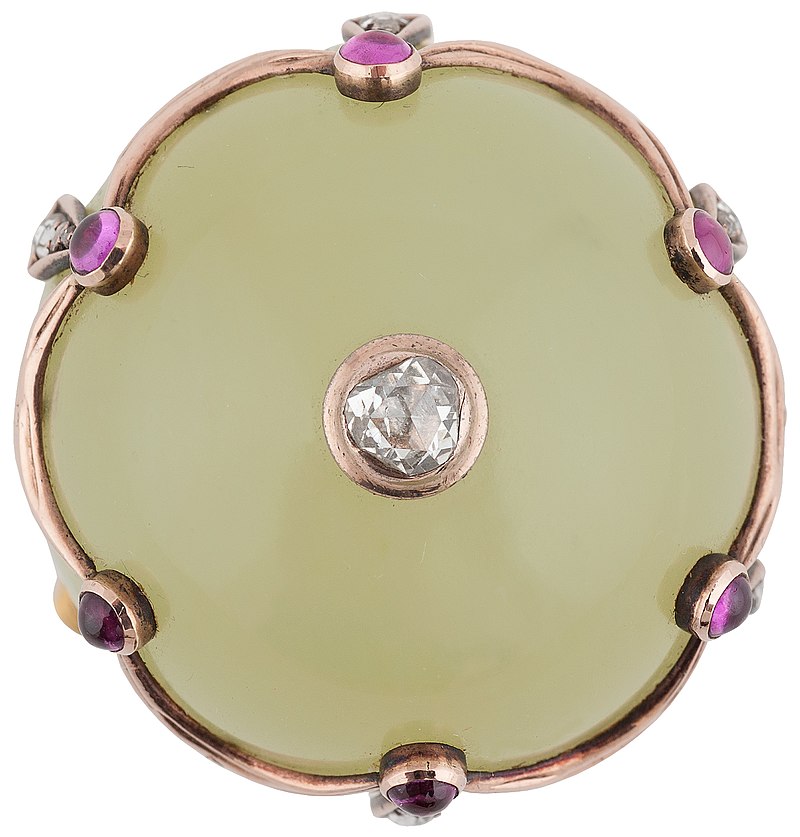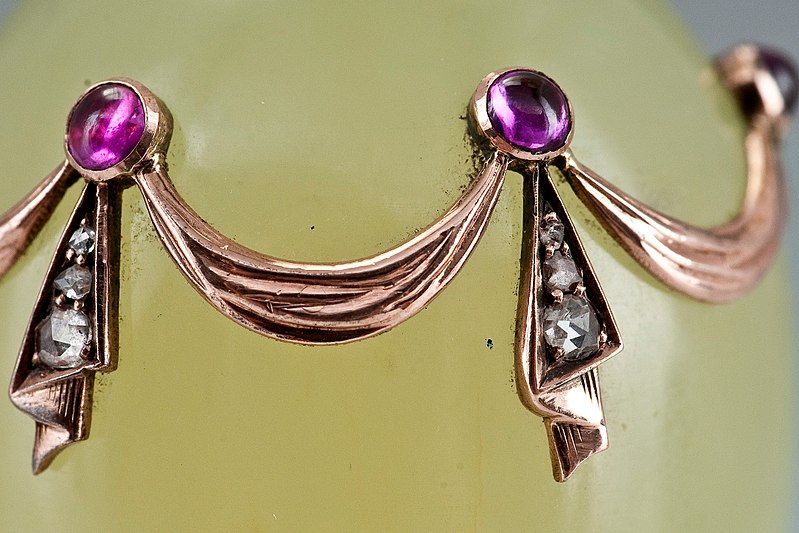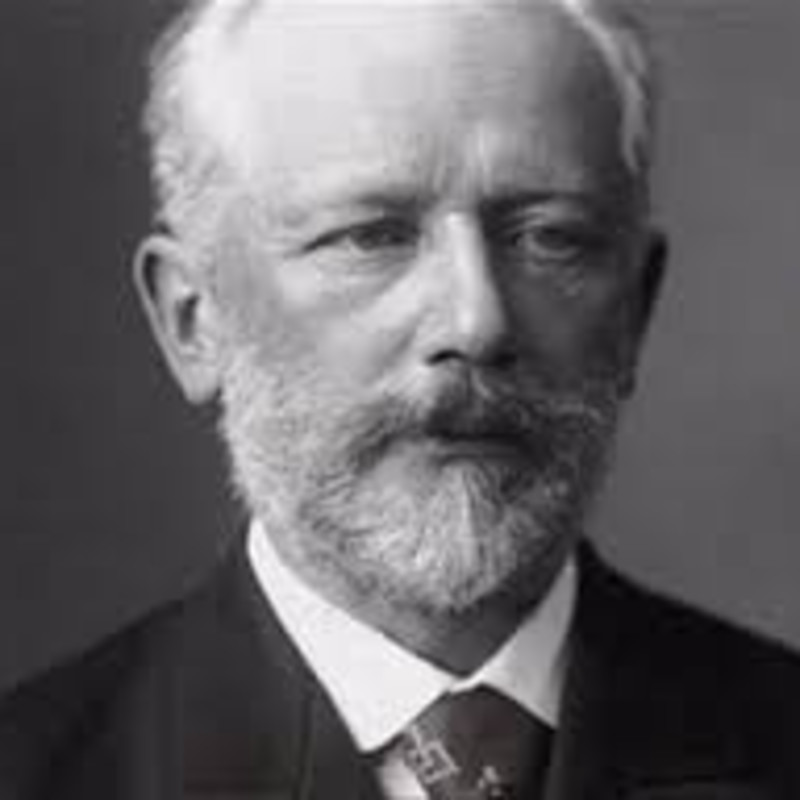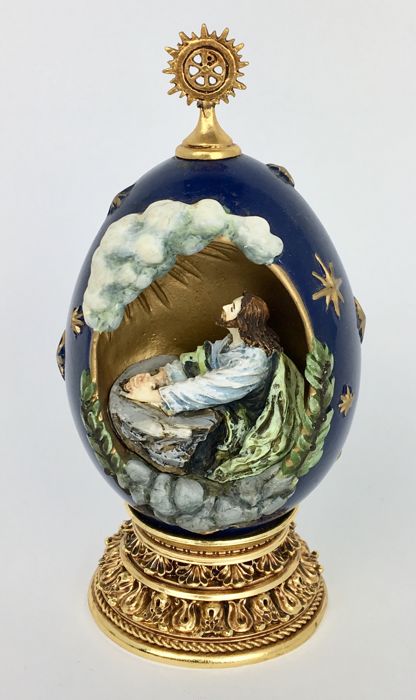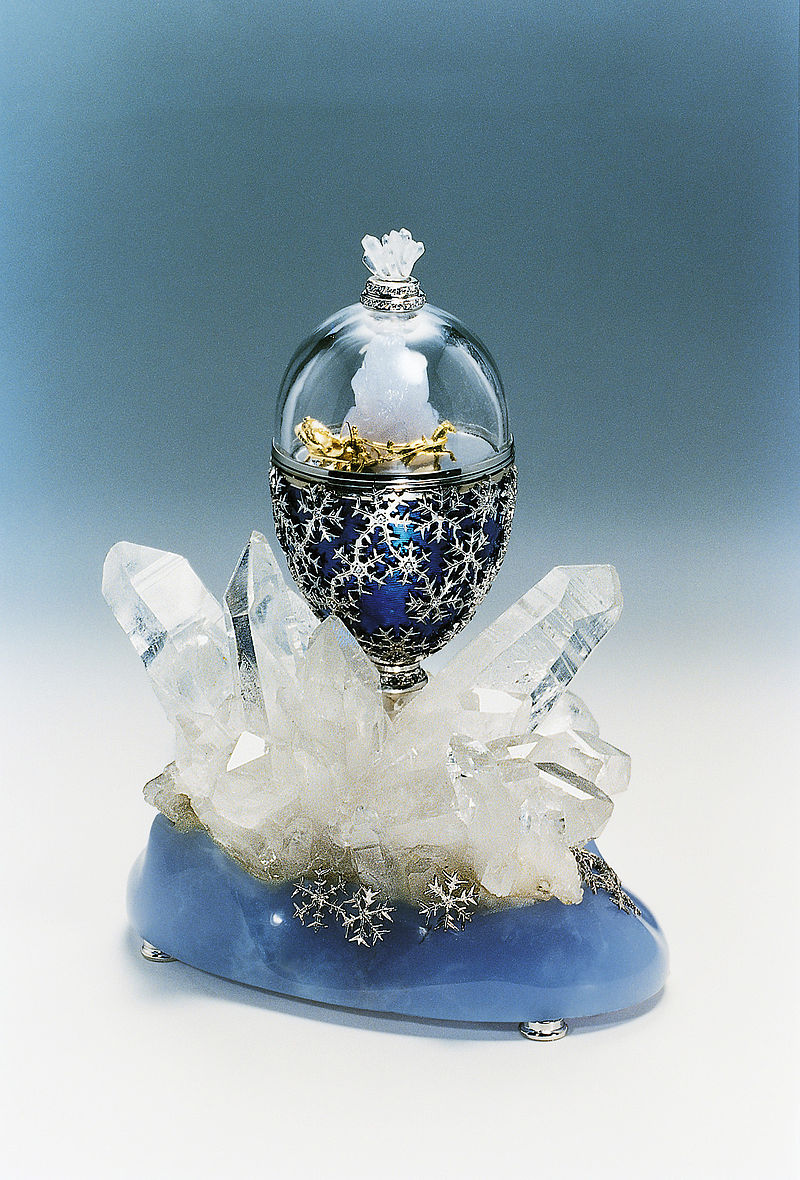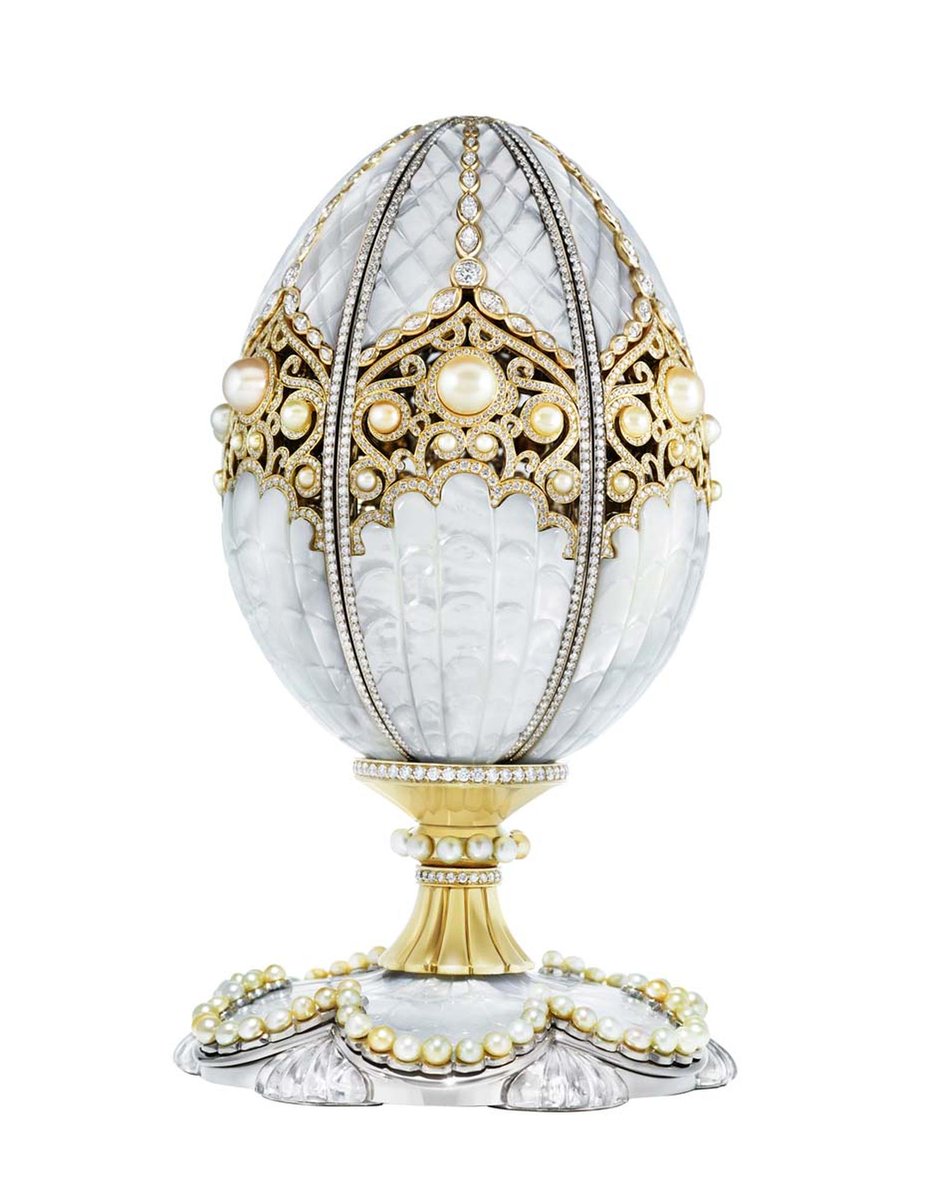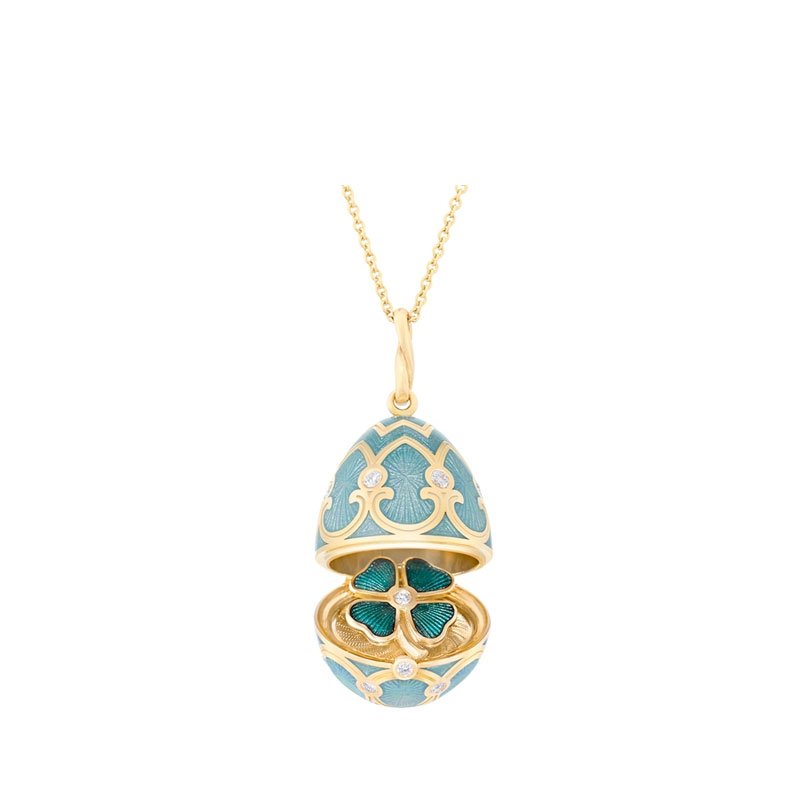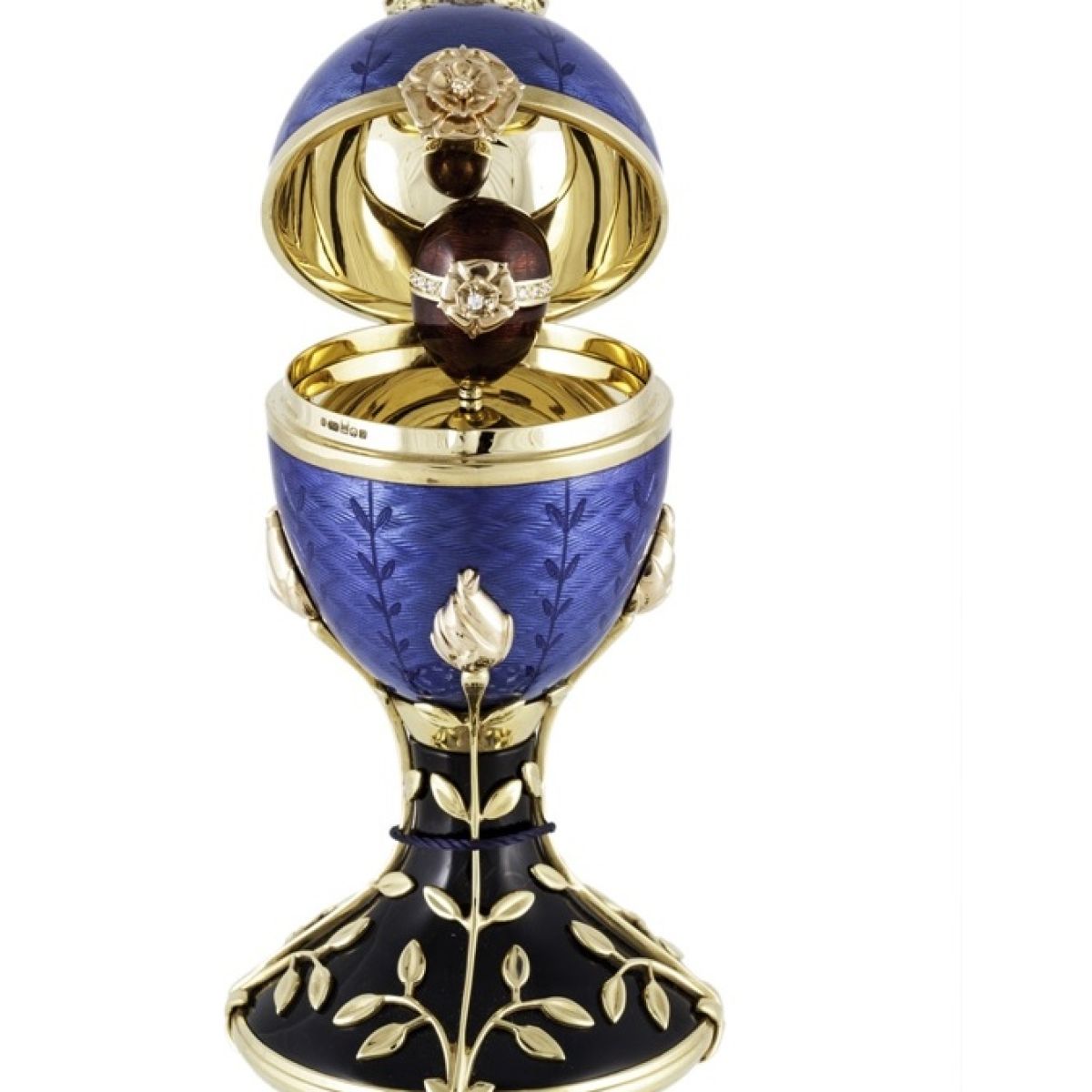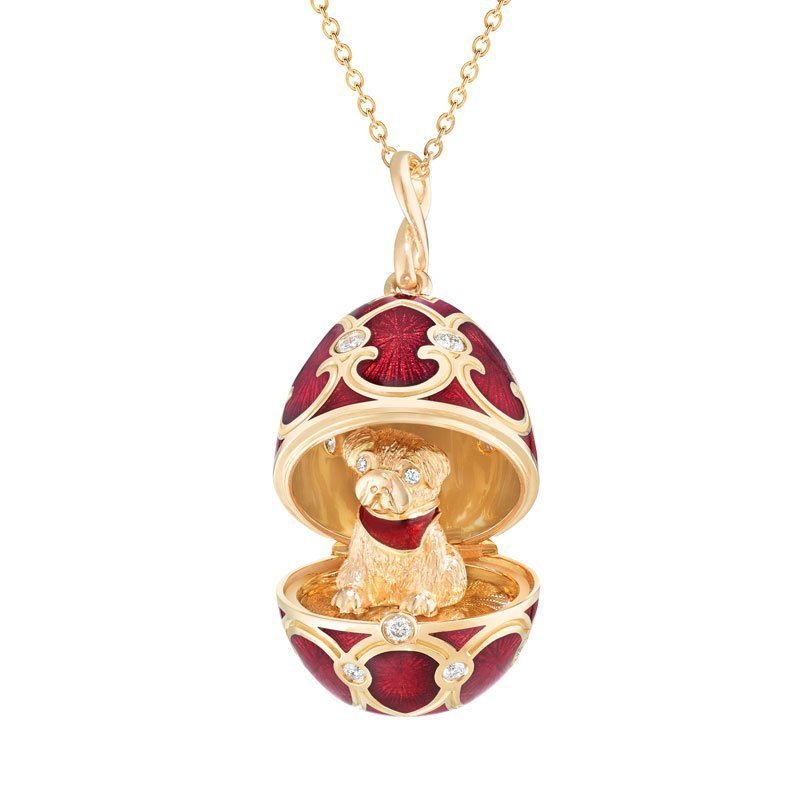In the previous thread, I told you about the Imperial Fabergé eggs, which were the ones made for Russian Tsars Alexander III and Nicholas II as Easter gifts for their wives and mothers.
The Imperial eggs enjoyed great fame, and Fabergé was commissioned to make similar eggs for a few private clients, including the Duchess of Marlborough, the Rothschild family and the Yusupovs.
Though still "Fabergé eggs" by virtue of having been produced by his workshop, these eggs were not as elaborate as the Imperial eggs, and were not unique in design. Most are copies of other eggs.
Fabergé was also commissioned to make twelve eggs for the industrialist Alexander Kelch, though only seven appear to have been completed.
These are known as The Kelch eggs:
The Kelch Hen egg is a jewelled, enameled Easter egg that was made in St. Petersburg between 1898 and 1903 under the supervision of Michael Perkhin , on behalf of Peter Carl Fabergé.
It was made for the Russian industrialist Alexander Ferdinandovich Kelch, who presented the egg to his wife, Barbara Kelch-Bazanova.
It is thought to be the first of the seven eggs that, every year from 1898 to 1904, were ordered by Alexander Kelch and made by Michael Perkhin, Fabergé master goldsmith at the time, frequently inspired by the imperial egg. It's in the Fabergé Museum in Saint Petersburg, Russia.
The Twelve Panel is a jewelled enameled Easter egg made under the supervision of Peter Carl Fabergé in 1899. The egg was made for Alexander Kelch, who presented it to his wife, Barbara Kelch-Bazanova.
The egg was created by Peter Carl Faberge's workmaster, Michael Perkhin and is crafted of yellow gold, rose-cut diamonds, portrait diamonds, translucent pink en green enamel and opaque white enamel.
The upper and lower sections of the Egg are each divided into six panels by bands of matt-finished gold, overlaid with rows of pink enamel roses with gold stems and translucent green leaves.
A band of rose-cut diamonds set at intervals with rosettes of additional diamonds encircles the Egg at its widest part. Each end of the Egg is finished with concentric circles of diamonds, gold and green enameled leaf motifs and pink enamel.
The top end is centered with a medallion bearing the initials B.T.K. in script under a portrait diamond.; the other end has a similar, though smaller medallion showing the date "1899". The surprise has been lost.
The Egg was purchased sometime in the 1920s and bought by A La Vieille Russie in Paris, likely from Barbara Kelch. In 1933 was sold by A La Vieille Russie, Paris.
Presented at Christmas 1933 by King George V of the United Kingdom as a gift for his wife Queen Mary of Teck, and remains a part of the Royal Collection of Queen Elizabeth II.
The Pine Cone egg is a jewelled enameled Easter egg made under the supervision of Peter Carl Fabergé in 1900. The egg was made for Alexander Kelch, who presented it to his wife, Barbara Kelch-Bazanova.
The egg was created by workmaster Michael Perkhin and is crafted of gold, silver, rose-cut diamonds, brilliant diamonds and translucent royal blue enamel. The miniature elephant is made of silver, gold, ivory, rose-cut diamonds and red and green enamel.
One end of the pine cone, a symbol of resurrection, is set with four petal-shaped portrait diamonds, forming a quatrefoil enclosing the date "1900". The opposite end is set with a rose-cut diamond star, enclosing a portrait diamond over a later miniature of a young woman.
The Apple Blossom egg, also known as the Jade Chest egg, is a Fabergé egg created in the workshop of Peter Carl Fabergé for the wealthy Russian industrialist Alexander Kelch who presented it to his wife as an Easter gift in 1901.
It is one of the largest such eggs ever created in Fabergé's workshop. It is also one of the very few Fabergé eggs which lies on its side rather than upright.
In November 1996 a man named Adulph Peter Goop, an art collector from Liechtenstein, purchased the egg at a Sotheby's auction.
Then, in 2010, shortly before his death, Goop bequeathed the egg to the State of Liechtenstein which now holds the egg at its Liechtensteinisches Landesmuseum in the city of Vaduz.
The Rocaille egg is one of the Fabergé eggs created in the workshop of Peter Carl Fabergé for the wealthy Russian industrialist Alexander Kelch who presented it to his wife as an Easter gift in 1902.
In this egg, the surprise is a gold tripod surmounted by a translucent enameled rose-colored engraved heart with the initials "B.K." (Barbara Kelch) set with diamonds on one side and the year, "1902" also set with diamonds on the other.
Inside, the heart has spaces for three images (most likely tiny paintings). The miniatures originally contained in the three frames are now missing.
The egg was sold by Kelch in 1920 following the Russian Revolution and was purchased by a Mr. Leon Ginberg that same year after being offered for sale by the French jeweller Morgan on the Rue de la Paix in Paris.
Because of French regulations with regard to hallmarking, this egg (and several others being offered up) could not be exhibited. In the 1940s it was sold by A La Vieille Russie in New York, and between 1949-1958 it was owned by Jack and Belle Linsky of New York.
Then in 1958 it was bought by A La Vieille Russie once again. Between 1962 and 1997 it was held in a private collection in Finland. Then in 1997 it was sold by a dealer named Proler of Dallas, Texas to an undisclosed private individual.
In 2012 it was purchased by Artie and Dorothy McFerrin for their collection. In 2013 it was exhibited in Houston, Texas as part of a Fabergé Symposium.
The Bonbonnière egg is one of the Fabergé eggs created in the workshop of Peter Carl Fabergé for the wealthy Russian industrialist Alexander Kelch who presented it to his wife as an Easter gift in 1903.
It is made of gold, diamonds, chalcedony, pearls, transparent white enamel, a velvet. The miniature box "surprise" inside the main box/ egg is made of agate and has been decorated with brilliant cut stones and a cabochon ruby. Inside this there is a pendant of gold and enamel.
The Kelch Chanticleer egg is a jewelled, enameled Easter egg made by Michael Perchin under the supervision of Peter Carl Fabergé in 1904. It was made for the Russian industrialist Alexander Kelch, who presented the egg to his wife, Barbara Kelch-Bazanova.
Upon the hour, a diamond set cockerel pops up from the top of the egg, flaps its wings four times, nods his head three times, crowing all the while during this routine. This lasts fifteen seconds, before the clock strikes the hour on a bell.
It was long believed to be an Imperial egg and was purchased as such from A La Vieille Russie by Malcolm Forbes in 1966.
The first doubts were raised as to its Imperial status in 1979, when the ownership of six Fabergé eggs illustrated in a 1920 photograph was attributed to Alexander Ferdinandovich Kelch.
These included several eggs which had previously been considered Imperial (including the Pine Cone egg and the Chanticleer egg) as well as three others bearing the initials BK of Barbara Kelch (the 1898 Kelch Hen egg, the 1902 Rocaille egg and the 1903 Kelch Bonbonnière egg)
In 2004, it was sold as part of the Forbes Collection to Viktor Vekselberg. Vekselberg purchased some nine Imperial eggs from the collection, for almost $100 million. The egg is now housed in Vekselberg's Fabergé Museum in Saint Petersburg, Russia.
Other Fabergé eggs:
The Duchess of Marlborough egg, also known as the Pink Serpent egg, is a jewelled enameled Easter egg made by Michael Perchin under the supervision of Peter Carl Fabergé in 1902.
The Duchess of Marlborough Egg is the only large Fabergé egg to have been commissioned by an American, and it is inspired by a Louis XVI clock with a revolving dial. It is similar to the earlier imperial Blue Serpent Clock egg
The egg was made for Consuelo Vanderbilt, who became the Duchess of Marlborough in 1895 when she married Charles Spencer-Churchill, 9th Duke of Marlborough.
In 1902, the Duchess and her husband travelled to Russia, where they dined with Tsar Nicholas II of Russia and visited his mother, the Dowager Empress Maria Feodorovna at the Anichkov Palace.
During this visit, the Duchess would have almost certainly seen the Dowager Empress' large collection of Fabergé items, which perhaps inspired her to order this egg. The egg is believed to have cost over 5,000 rubles.
After her divorce from the Duke of Marlborough, she donated the Duchess of Marlborough Egg to a charity auction in 1926. At the 1965 Parke-Bernet auction of her property, it was bought by Malcolm Forbes. It was the first of several Fabergé eggs that Forbes purchased.
In 2004, it was sold as part of the Forbes Collection to Viktor Vekselberg. Vekselberg also purchased nine Imperial Easter eggs, as part of the collection, for almost $100 million. The egg is now housed in Vekselberg's Fabergé Museum in Saint Petersburg, Russia.
The Rothschild egg is a jewelled, enameled, decorated egg that was made under the supervision of Peter Carl Fabergé by the workshop of Michael Perchin in 1902.
Béatrice Ephrussi de Rothschild presented this egg to Germaine Halphen upon her engagement to Béatrice's younger brother, Édouard Alphonse James de Rothschild
Upon the hour, a diamond-set cockerel pops up from the top of the egg, flaps its wings four times, then nods his head three times, crowing all the while. This lasts for fifteen seconds, before the clock strikes the hour on a bell.
It was sold by Christie's auction house on 28 November 2007, for £8.9 million (including commission).
The price achieved by the egg set three auction records: it is the most expensive timepiece, Russian object, and Fabergé object ever sold at auction, surpassing the $9.6 million sale of the 1913 Winter egg in 2002.
The egg was bought by Alexander Ivanov, the director of the Russian National Museum. On 8 December 2014, the Rothschild egg was given to the Hermitage Museum in Saint Petersburg, Russia
Yusupov's egg, was made in Faberge's jeweler workshop, by request of prince Felix Elston-Soumarkov as a gift to his wife Zynaida Yusupova, on the occasion of their 25th wedding anniversary in 1907.
It is made of yellow and red gold, diamonds, emeralds, pearls, rubies, white onyx, transparent crimson, both pink, and opaque white enamel.
It was possibly sold by the Russian officials in Paris or Berlin. In 1949, it belonged to dealers in London.
The Nobel Ice Egg, sometimes also referred to as the Snowflake egg, is a jewelled Fabergé egg made under the supervision of Peter Carl Fabergé for the Swedish-Russian oil baron and industrialist Emanuel Nobel between 1913 and 1914.
The pearl-colored ground of the shell is covered with white enamel in alternating transparent and opaque layers each painted and engraved separately to resemble frost, the result is the icy opalescence of a winter morning.
The egg, without support, lies on its side and opens in half along the greater perimeter, on the edges there is a row of beads. It lacks the realism of the Winter Egg which, however, shares the inspiration and technique in the execution of the hinges inside the jagged edges.
Inside there is a watch pendant, the dial is partly hidden by decorations in the shape of ice crystals placed on the case, made of opalescent rock crystal.
After the Russian Revolution, it was sold to the Parisian dealer A. A. Anatra, who subsequently sold it to Jacques Zolotnitzky, of A La Vieille Russie, in Paris. It was later sold to a North-American collector. In 1994, it was sold at Christie's, in Geneva, for $220,000.
The Nobel Ice egg's current owner are Artie and Dorothy McFerrin of Houston. It is on loan at the Houston Museum of Natural Science.
The Resurrection egg is a jewelled rock crystal Easter egg believed to have been made by Michael Perchin under the supervision of the Russian jeweller Peter Carl Fabergé sometime before 1899.
Long considered to be a separate Fabergé egg, it has been postulated that the Resurrection egg is actually the missing surprise from the Renaissance egg.
The egg depicts Jesus rising from his tomb, and it is the only Fabergé egg to explicitly reference the Easter story. Long considered a Fabergé egg, and recognised as such by leading Fabergé experts, it does not bear an inventory number.
It has been postulated by Christopher Forbes that the Resurrection egg is the missing surprise from the 1894 Renaissance egg, as it perfectly fits the curvature of the Renaissance egg's shell,
has a similar decoration in enamel on the base, and features a pearl, which is mentioned in the invoice for the Renaissance egg but not present on that egg.
The Resurrection egg was bought in 1922 by a London art dealer, then sold at Christie's in 1934. Owned by Lord Grantchester, it was bought from his estate by Manhattan art dealers A La Vieille Russie.
In 1978, A La Vieille Russie negotiated a private sale of the Resurrection egg and the First Hen Egg to the Forbes Collection.
In 2004, it was sold as part of the Forbes Collection to Viktor Vekselberg. He purchased nine Imperial Easter eggs, as part of the collection, for almost $100 million. The egg is now housed in Vekselberg's Fabergé Museum in Saint Petersburg, Russia.
The Spring Flowers egg, sometimes referred to as the Imperial Spring Flowers egg, has been considered one of the Imperial Easter eggs attributed to Peter Carl Fabergé (and therefore one of the Fabergé eggs).
If it is an authentic Imperial egg, then the Spring Flowers egg would have been the first in the series of "flower eggs" and would have been created between 1885 and 1890.
It consists of a case made of white maple covered in leather with steel hinges and clasps containing a smaller egg (the official "Fabergé" egg) decorated in red enamel and gold scroll work placed upright on a small stand of carved bowenite which then opens vertically to reveal
a fully removable bower of flowers made of garnets and white chalcedony in a basket of platinum. It was purchased by Russian businessman Viktor Vekselberg in 2004 as part of a collection of such eggs and various other Fabergé items.
The authenticity of this egg has been cast in doubt by Fabergé experts. It only became identified as a Fabergé egg when a researcher noticed it in a photograph from pre-revolutionary Russia.
Its method of construction is noticeably sub par, having diamonds of mismatched size and with inferior quality attachments, and two halves that are asymmetrical, failings not characteristic of Fabergé's workshop.
It also does not bear the expected maker's marks, and has other design features which may signal its status as a counterfeit piece. Although it has been examined many times by experts who have often agreed with its original attribution, there is no record of who might have
supposedly given it to the Romanovs and no correspondence between Faberge and either of the last two Russian emperors to confirm its commissioning or its delivery. Neither does it have a clearly documented provenience or record of ownership.
Although its materials (gold, diamonds, enamel, etc.) are typical of Fabergé's workshop, the method of construction and inadequate/ incomplete history cast significant doubt on its authenticity
The Scandinavian egg is an enamelled Easter egg made by Michael Perchin under the supervision of Peter Carl Fabergé between 1899 and 1903. The egg was made for a St. Petersburg client. The egg opens to reveal an enamelled yolk, which contains a miniature hen.
Rediscovered in an Oslo bank safe, among the possessions of Maria Quisling, the widow of World War II fascist collaborator Vidkun Quisling, it was acquired by Malcolm Forbes for his Fabergé collection in the 1980s.
The Forbes Collection was sold in 2004 to Viktor Vekselberg for almost $100 million. It is housed in the Fabergé Museum in Saint Petersburg, Russia.
Egg-Stamp is a jewelry Easter egg created by Michael Perkhin under the auspices of Peter Carl Fabergé in 1895, for Vasily Denisov.
Egg-Stamp is an egg of bowenite topped with one large diamond. The upper part of the egg is encircled by a rose gold garland featuring six rubies and eighteen diamonds. The egg is supported by three cherubs adorned with a ruby cabochon on each of their chests.
The underside of the base is engraved with the coat of arms representing the renowned branch of Denisov Cossacks, descendants of Vasily Denisov, Captain of Horse Guards. General armorial of imperial Russia. Part XVIII, No. 4.
Egg-stamp was manufactured for Vasily Denisov, as his personal stamp. Peculiarity of the subject is in its historical, artistic and scientific unprecedented and unique. The level of work is worthy only of the imperial collection.
After the Vasily Denisov's loss of the stamp, it was obtained by a Finnish enterpriser in Petrograd, a grain bargainer and taken to Finland by its owner during the Russian Revolution of 1917. The family possessed the subject until 1989.
It was at the auction by the Bukovskys in 1981 (not sold), in 1989 the stamp was estimated by the expert of the Auction House Christi Mr. A. de Tiesenhausen, who confirmed the identity of the object and its affiliation to Faberge company. Right now is in a private collection.
Following the revolution and the nationalization of the Fabergé workshop in St. Petersburg by the bolsheviks in 1918, the Fabergé family left Russia.
The Fabergé trademark has since been sold several times and several companies have retailed egg-related merchandise using the Fabergé name.
The Victor Mayer jewelry company produced limited edition heirloom quality Fabergé eggs authorized under Unilever's license from 1998 to 2009. The trademark is now owned by Fabergé Limited, which makes egg-themed jewelry.

 The End
The End 

Thank you If you read until the end! I hope you found interesting this information about the less-known Fabergé eggs


 Read on Twitter
Read on Twitter